|
Every time I make a book I make a series of works as a part of that project. For several years now, I am confounded about what to do with the artworks for each of my artist books. What do you think I should do with each of these collections? The collections of artwork are -A series of drawings from my first book Contemporary Prayers to Whatever Works. The above image is one example of fifty. -A series of small bits and artifacts from my second book Help me [ ], do the thing. 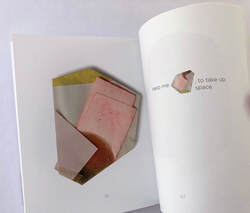 -A series of drawings from the 2021 edition of Contemporary Prayers to Whatever Works -A series of drawings from the Elements: a love letter to all things everywhere. and finally
I have these 'Lots' of Collection of really valuable things and I keep them really safe, but I can't decide what to do with them. I am open to selling them, I could auction them in some way, ideas please!?!?!? Thanks! Happy thanksgiving, and leave all ideas below please!!
0 Comments
Before I share about sparkiness, I want to extend an invitation to the WestSideArt Hop this weekend. Please join us if you are in the area (of Ann Arbor MI). Details here. Lots of new things to see!
Was there a small creative spark in your early years that became a vivid theme in the work that you do today? I recently came across this little paper remnant from when I was a kid because it relates a lot to my artwork. I don't remember the specifics, but what I vaguely recall is that this paper was from a listening and noticing exercise I was invited to do for a class in middle school. This is the piece of paper I wrote on. It had been folded into fours. It's something I keep on my bulletin board to remind me of how impressionable we are as kids and how simple things like this exercise can shape a life. List making in and of itself has come into my work many times, most notably in Empty Full, in which I inventoried every single object I own as both a list, and as a single calculated volume of space, which then was shared as a hollow cylinder in the same volume, with the list of objects on the floor of the structure. In Yardsale, while I was holding an object with all of the usual stuff for sale, I asked each customer to cross off of a list an item of their choice for every object they bought. The list was of intangible things I was, I felt, ready to let go of at that time in my life. The list has things like: "Taking the bigger piece of pie" and "laughing when it's not funny". Visual Traces of Groups of Work. I and five volunteers observed what was happening in the gallery: minute repeating events that are a part of a group at work, that became a list as part of the work, and then got translated into different types of adhesive marks on the walls and floor of the gallery, exhibited along with the list. Lists also feature heavily in my third book the Elements: a love letter to all thing everywhere. Here, the objects and areas in which each element is found, are listed for all 118 chemical elements, as well as their behaviors, qualities and uses. All of my books except the very first have Indexes, another kind of list and another way to explore and enter the content of the books. Spot Count asked others to list their noticings in open public spaces like a weedy lot or a park, much like I was asked to do in school long ago, though they moved through the space like you would for a bird count, or for a forensic search, but in my project, leaving colorful marker wherever they stood and observed. I'm also excited to share that this same theme is coming forth in a new book project that will be ready to fully to share in just a few months. It's a book called Field Guide to Ambiguity, and is about all of the situations in which ambiguity is present, as well as some of the strategies we use to deal with it. It is essentially a list of such ambiguous situations, paired with a new artwork, reflections and variations on each situation, as well as beautiful design by my collaborator Patrick Barber in Detroit. Patrick has contributed much to the building of this book, the structure and the editing process as a book designer and a designer specifically of Field Guides as luck would have it. I can't wait to share it with you, but for now, let's return to the piece of paper that inspired this post! Do you have something from your childhood that made a huge impact on your livelihood, artwork or other creative work in a significant way? What small thing was introduced to you that became a seed, that then grew into something huge?
For you today, I have a brief talk I gave back in the fall of 2018 called 'Art Among the Elements.' at a local night club as a part of Nerd Nite - a story corp style gathering hosted by the illustrious Ann Arbor District Library. I talked for 22 minutes about the third book which was in process at the time: The Elements: a love letter to all things everywhere.
I share in this talk about why I make books, how I came to make this one on such a different subject than the two prior books (on prayer), and the distilled learnings and takeaways from the process to date.
I am sharing it with you here. It’s not the live talk, so you can’t hear the wild and untameable audience participation, but the sound quality is pretty good and there are some pretty slides. A note too that I have a few scientific facts *almost* right in this talk, corrected when I actually did complete and publish the book in 2019.* Please enjoy and thank you for helping make this book a reality! All I had at the time of the talk was a prototype with a slightly different name. I was still working out layout and layering of the meaning and content of the book. Looking back, it’s amazing to see how many things needed tremendous time and patience to come into focus. I didn’t learn how to give them either until I was in the very end stages. In essence, this book taught me to slow the F down, care for my body, and to tolerate uncertainty better than I had ever been able to before. To see the book in its finished form, you can visit its official web page, or find it for sale in digital or physical form at my shop. You will also find a grid poster, a set of prints and a set of postcards, as well as a curriculum to walk children and adults through the book scavenger-hunt and interdisciplinary-style, which is my teaching and making way.
Speaking of uncertainty, that’s a topic I am currently exploring in another decade-long book project that is underway in earnest today! I will share more about that soon.
*The primary factoid to correct is that Hydrogren formed not immediately after the big bang, but as things cooled down in the time that followed when atoms could in fact pull together at all. Share with me your thoughts! What is sparked in the electric being that you are by this topic and this story? I made my first handmade book in college. I took a great, year-long course at Brown taught by the artist Walter Feldman that was half of the year paper-making, half of the year book-making. We had the use of the John Hay Rare Books library, just next door to the art building, and we made books in editions of three or more. I concentrated in my art major on printmaking, and so this theme of multiples in my work begins here. Learning to repeat something that interests me, to see where it leads, began with that printmaking practice and the creation of multiples. I made paper with symbolic content to it, like fibers from my mother's nightgown, dried flowers from her room, and then experimented too with things like coffee grounds, tea staining, lots of sentimental ephemera. Most of the paper I made was white, and I still have a lot of it today. Bookmaking in the course was formal, and I don't love the books I made in the class. They looked like most handmade books you see at a fancy store, elegant and formal. I did make a final piece which I still value: a sagey green book box, with two smaller booklets inside. One side had a floral handmade paper and photographs of my deceased grandmother, who died when my mothers was five years old. On the other side were delicate reproductions of her medical papers, describing her cancer, her visits, and her autopsy. After college, I made and sketched in journals, and began making very experimental books out of things like bed sheet pages, with wool blanket covers, one book with blank pages whose covers were made from a journal whose pages had all been pasted together and were illegible, inspired by the way traditional book board is made. I've always loved papers: collecting them into groupings by color, folding them, piercing them, dipping and staining them, and of course drawing on them. So many of these books explore and share paper. They are generally not for writing in, not for reading, not for using really at all. They are just little nuggets or facts in and of themselves, and I still value them immensely.
I enjoy the work of making a book, and I have a box that has book materials in it: the wax for waxing the book thread, stacks of papers and half finished projects, things that would work as book board, etc. My recent books have been to formalize the Death Book project, by making books from the papers of my dear friend Ron who died last March, and my grandmother who died in 2005. The two books are very different, in part reflecting the different scope of material I had for each. My grandmother's papers range all over the place, all her studies, her journal entries, letters and lists. Ron's papers almost all relate to courses he took and independent studies of Buddhist writings and practices. These books exist in multiples of maybe one or two. I made one smaller one of my grandmother's materials, but it has yet to get a cover. I also have another book in progress, made from the pink tissue paper backings of a whole series of plastic gloves, an old way of packaging them. The plastic gloves are attached and they are quite something. I have also made books out of carbon paper, paper towel, junk mail, old insurance papers, books of unused tickets, and similar. I have been to the North Bennet Street School in Boston's North End, where bookmaking as a craft is extremely exacting, alongside the craft of building violins, guitars and fine furniture. This is not my grade of book, and I'm relieved to say so. I don't know if I would have made any of these books if they had had to be perfect. I am glad they exist. It's funny to me that I then went out and made self and other published books - artist books of a different sort, and that these have become central to what I share in the world. These larger scale production books can be shared much more easily and affordably, handled by everyone, and reproduced easily and yet it's nice to share here the other end of the spectrum of book I have made. My dear friend Ron passed away in early May of this year. He had a form of cancer. We had been walking weekly, getting coffee, and when I moved, talking every few weeks. He read a poem at my wedding. He came to my art events. He taught me how to ground myself in my legs, to listen with my whole body, and to lower my expectations about human marriages, how they roll and how they feel, especially the first few years. In other words Ron was a good friend. When he died, I realized I only had his cell phone number, and it took a bit to get his wife Patty's contact information. I called her to check in, see how she was. I know Patty less, but have spent a number of new year's days at their house, and she too, drove three hours to be at my wedding in 2017. I care about Patty. She was doing OK. I asked her about Ron's papers. She was happy to part with some of them, because she was in a cleaning and clearing mode. She sent me a box which I opened two days ago, with a few books and some of Ron's papers, so that I could make a book with them, one of the series I've made starting 20 years ago with my earliest handmade books. In this series 'Death Books,' someone's papers, after they die, get folded every which way and bound, so that you can see their thinking, their marking and their reading and writing, but it's now sideways, folded, upside down, only partly legible. It is a relic of a life that is now over. It is the data and the trace of the life of that singular mind. Opening that box was something. Tender. An honor. First there was a little fat, laughing buddha on top of all the bubble wrap. Then Ron's inflatable zafu, meditation pillow, on which he did many a three month and one month retreat. Inside were his many notes, and his paper's from the Barre Center for Buddhist Studies. His letters of recommendation to join the retreat and have interviews with Joshu Suzuki Roshi, the stories about which I have heard many times. It's Ron in papers. These books and the death of people, animals, chapters of life, or relationship, remind me that this art practice is just for fun, whether or not anybody else care's about it. It's just for a while. It's for while I'm breathing, inclined, and able to engage it. Doing something is more important, I feel, than doing it right, or looking good, or towing a line. I can turn a studio practice into those things for sure and I have, but engaging an art practice and making art, to me, is more important than most 'normal activities' in the following way.
Everything, every object in your world is a kind of icon. It's for doing something with. It prompts a certain kind of engagement. Like a file folder on your computer desktop is an icon. A bowl is to eat soup from. A file folder is to open to see files. A chair is to sit on. A book is to read. A dog is to pet. Icons. An artwork is to...well what is it there for? What is it for? This line of reasoning kind of halts the automatic engagement, if one is really looking, and can loosen the automatic pilot of doing, responding, engaging. In fact anything. a chair, a book, or a dog, can similarly open things up, if one is really there with it. If one forgets it's name, or what it is associated with, or what you think about it. Somehow art is such a personal rendering with no obvious point, that it can be at times more ambiguous, and open things up. Other times, it's another symbol: of status, of fashion, of historic importance, or the kind I don't like. Art is to look at. Art is to buy. Art is to make. But as Anne Truitt said earlier: ...this process is mysterious. It's like not knowing where you're going but knowing how to get there. The fifteen years that David Smith thought it took to become an artist are spent partly in learning how to move ahead sure-footedly as if you did actually know where you are going. -Anne Truitt Death Books is now also a service, which is described more fully on my art website: hannahburr.com/deathbooks. I will make one for you, from the papers of your beloved departed, if you like. Because of it's strong associations, I've spent a lot of time considering whether to use the word 'prayer' in my books at all. It's one of those hot button type of words, for many, and so I considered using several others instead. Other words I considered using instead of prayer included: Petition Supplication Affirmation Request Poem Intention Ask Aspiration Have I forgotten any that come to mind for you? Writing all of these down makes me a) want to find an anneagram just because that sounds like fun (SPARPIAA? APRIAPSA!) and b) helps shed light perhaps, into what prayer is. I always find this - that just translating, rewording, re-expressing something a different way, gets in between the labels and the lines a little more, into the experience of a thing itself. I know for me the word prayer is a label. It’s something that THUNK has a symbolic shape and feeling and form. For some, this symbol or label has a positive tone or feeling about it, or a mixed tone, or something aversive, irrelevant or negative about it. When sharing about this book with say, museum shops, I avoided using the word in email post titles because so many people would just say NEOPE and delete it. Anyway, here’s what I learned from the consideration of and use of other terms. Petition was not as religious of a word, and so might have been more descriptive or inclusive, and yet for me there is a pairing with politics, PTA meetings, civic dialogue. This kind of petition, meaning the kind you find in three of my books, is intimate, sometimes wordless, sometimes even embodied in gesture. Supplication, to supplicate, is the ‘act of begging for something earnestly or humbly.’ Someone pointed out to me that that is one type of prayer you might find in my books, but it isn’t what all of them are. Some of them are more like ‘Hey thanks!’ or ‘I’m not cool with this’ and those are points of contact, but not supplications. Affirmations do apply to many of these prayers. This is language more of Buddhism, freed up from religiosity in the traditional western sense. An affirmation by one definition is a form of emotional support and encouragement, and so when directed from me to me, or from me to someone else, may be like: ‘You’re doing great!’ or ‘You’re beautiful, don’t ever change.’ Some of the prayers in my books have this kind of tone, but instead they would be phrased like ‘Remind me’ or ‘show me that I am beautiful…’ which combines supplication or affirmation. Requests would work, for sure. or even the word Bid. I like the word bid, popularized by the phrase ‘Bids for connection’ in the work of John Gottman, because a bid can take many forms, and I think prayer can be the way one lives a life, receives a gift, receives an unwelcome piece of news or a loss, or essentially, does anything. So I do like Bid. I’ll keep that one in mind. But on the cover of a book, it might relate more to the association with an auction and the Highest Bidder. It has been pointed out to me that this series of books of prayers are essentially poems. Yes. However if I thought of them a poems, I would be twisting myself into knots, trying to wordsmith the crap out of them, and nary a one would have been published. So I’m glad that thought didn’t occur to me. But for many, I have learned, they look at these as books of poetry, and this opens things up even more. Intention. Intention is a word I use a lot. It’s a word that gives shape to the nebulous. It’s a word from which things materialize. I find that prayer is a form of intention. It is an intention perhaps to connect. To widen, open, release, remember, rest, through a bid for connection, or a prayer. It has a great relevance to these books. These books as I see them at this moment, are a way to frame an experience, a way to shape or re-see and turn to a new view of what had previously been understood, thought of, or determined. It’s like a pulling back and opening up. And these are all a form of reshaping, intending. There is a collaborative aspect to both the prayers and to intentions. Intentions perhaps connote a more self oriented activity, but perhaps these prayers are similarly that as well. Ask is just a term that I rarely use, but a fun alternate to throw in there: Contemporary Asks to Whatever Works? sure, but the grammar gets confusing! Aspiration - a hope or ambition of achieving something. Yes, this does fit. An aspiration to whatever works, is like a bid or an ask, a form of reaching. And prayer is in a sense an act of reaching. So, that’s my meander through a process of vetting terms for the title of my books. Incidentally, the third prayer book is called the same thing as the first. Originally it was going to be called Volume 2, with the same name, but the sales team decided that for new readers that would be confusing and so left it off. So I refer to it as the All New 2021 Edition for the purposes of clarity, because it is all new art and all new prayers. Your thoughts? Other book title ideas for the future? Please comment below! Find Hannah's other books for sale here. Another kind of mess is not knowing. This feels very messy, though it is a very common experience on this planet. How will it turn out? Any project is full of such unknowns, and add to that a team of people you don't know very well, and multiply the unknowns by 2X the number of people on the project, and you have what can feel like a very big mess. How to interpret a silence can be messy in an of itself, and this is in so many places where silence is occurring: Did we get in? Will he call back? Do they like it? Am I going to get to keep this job? Am I dying? Are we ok? What happens next?
The good news is that every religion in the world, most philosophies and many spiritual traditions, as well as the content of most magazines and books, is in response to just this kind of mess, and is filled with explanations, theories, ideas, fixit strategies, processes, hacks and stories to help ostensibly with such a mess as the unknown. Which ultimately is the mess of your life unfolding, perfectly, but without your foreknowledge or a map, no matter what kind of an expert planner and list maker you may be. I won't try to wrap this up with a pithy platitude, just that I feel it too, about every other day, and you are not alone in this messy feeling. Here is a related page from the new book: Contemporary Prayers 2021 edition: In just under a month, the third prayer book, which is my fourth book, and is also my very first book fully published by someone else (in this case Simon+ Schuster’s Tiller Press) arrives! As if by stork. It has in fact already been printed but I have not yet seen it. This feels a little like when you’ve given birth in the nineteen fifties and you are waiting for a nurse to bring you your child. But instead your child is going to arrive one of these days via the US Mail in 2021.
It’s in a very small way like that. The hard work is done - or is it? The sweat of creating the thing has been wiped from our brows, and now the book exists, they tell me, and I am excited! It will be fully out in the world on March 23rd 2021!
But for now, the news I have is that your pre-ordered book is within reach, and is available for purchase via the retailer of your choice at this link: bit.ly/contemporaryprayers It is funny trying to get ready for something you haven’t ever experienced. It’s challenging to know what preparation matters, and what is just spinning wheels. Self publishing is a very different beast. A lot more control, a lot clearer information, a much smaller platform, and for me, a little more of knowing what to expect. Which here I do not! Especially in the last year, I find that I am committed to having a reasonably day, everyday, wherever I have a choice in the matter. There is so much in this year that reveals how little control we have, and with this information, it’s become clear to me that being kind to oneself and to those around one is a priority. So I will plan on sharing with you in small bites, in palatable doses for both of us, with the intention of enriching your life and moment, and showing up to be a steward for what s arriving. Here are a couple of sneak peak inside pages for you, and some prayers to get a sense of it. Hannah, why prayer? When I share about one of the prayer books, this is one of the questions that comes up. Why did I write these books in the first place? Prayer was not a regular part of my life growing up, and nobody really modeled it for me. I was raised in an Episcopal church, the Easter and Christmas kind of attendance, where it was more social and obligatory than in any way personal. Church was a place where my mother got support and childcare when she was single, working, and struggling. Church was a place where I remember the toys in the daycare area and the beef broth scalding my tongue after the service. There were a couple of nice prayers, but the repetition en masse felt like I was in an army or something, and I was proving my allegiance for my peers, not in any kind of personal or conscious contact with anything. I came across a more practical form of prayer from several close mentors I had in my twenties and thirties. I learned about things like a prayer for fear and a prayer for when you're pissed off at someone. I also learned there about laying off the whole 'what is God' type of conversation, as less important than actually being in some kind of constructive action, when the alternative is more suffering, conflict and resentment. The prayer books I've written do not use a word like 'god,' which I see as the ultimate placeholder word, and instead use a form that is abstract, in other words, it doesn't look like anything specific, and that changes on every page and is part of the sentence. * Why did you use a symbol instead of the word 'god' in your books? I did this because I actually don't know what it is that I'm praying to. I have no idea. I used to have lots and lots of ideas, studying religion and art at Brown University, but I had no experience of prayer, connecting, or feeling connected to speak of. Just a lot of thoughts and ideas about me and my beliefs. That didn't help in any way. Prayer itself has been incredibly helpful once I got desperate enough to actually use it. Prayer for me is a kind of gesture that you make. It's a kind of connecting, like when the Buddha touched the earth when Mara was getting all up in his grill, or when a dog comes up for a stroke on the muzzle. It's an act of going into relationship. The weird part is, you can, in my experience only learn what you are going into relationship with by trying it out and seeing what happens. Testing the hypothesis in other words. The issue that I find with religious forms of authority is that they describe something ineffable and then we're dealing with third hand information, and no personal experience whatever. Why do you use the form of relationship like in a me and you kind of way, if you don't know what you are praying to? If I may be praying to Gravity, or the Universe, why am I using interpersonal language? I use this language because it's how I as a human being am wired. I am wired for relationship. For a me and you kind of equation. So the you in this equation becomes anything and everything, when instead of a word it becomes an abstract form. Why is there a picture instead of a word in your book of prayer? How did that idea come about? I am an visual artist and also have a background in design. At one point I took Edward Tufte's course on the design of visual information and I learned about Galileo and the way he notated his observations of planets and their travel through the night sky. He used small pictograms or of planets right in a sentence, like symbols in a math equation, instead of a name for it. This really stuck with me. (The image above is a screenshot from Edward Tufte's website). This is what inspired the use of an image in each prayer, rather than a blank or a word. Also, it was the only way I would ever write a book of prayer, because I strongly feel that every one of us has our own conception of whatever the shared ‘god’ is, even if we all belong to the same spiritual or religious or yogic organization. There is literally no way we all have the same feeling, image, or idea, even if the culture is extremely specific about the details. Everyone is doing some kind of translation process whenever language is used, to make sense of and meaning out of what is shared, just like you are doing while reading here. That I feel is no different for shared spiritual, philosophic or religious beliefs and ideas.
On the verge of a brand new edition of Contemporary Prayers coming out on March 23 2021, it seems relevant to share my general experience with a philosophy of prayer. In related posts (upcoming!) I share about why prayer in the first place, about the “God” word and how it seems to me.
Of course, this is a philosophy of one, and whenever I am sharing such things, it is only for you to investigate and see for yourself. That’s kind of the point of the prayer books in a way, is to connect directly, see what happens for you, tweak it, leave it be, and know what your own response is.* Here are seven ways that I find prayer works effectively 1.Don’t sugar coat a prayer: If you speak with a flourish because it’s who you are, that’s how I have found it best to pray: in your own language, and without filagree that isn’t genuine. I’ve found my own language is a little less floral, and as a result, the relationship is also easier. Just think about other relationships and the language you use with the people closest to you. If it’s intimate, the way you speak is likely genuine and honest. 2. Bring especially, the petty stuff to prayer: It’s the petty stuff that sometimes really gets me. That’s the stuff that can grab hold of my system and not let go. So that’s the stuff I particularly set down through prayer. That’s how it feels. It’s like setting something down. That’s why in my first book, there are prayers about finding keys and turning down the heat. Sometimes we humans need help making basic decisions or remembering basic things. I also find that when I do use these kinds of ‘set down’ prayers, I find that I don’t need to ‘hold’ the worry or the fear. I do remember, I do turn and pick up that book and lo, the keys are there underneath the book when I’ve asked for help in prayer with these details. That’s the only reason that I have shared these prayers. They have made things much easier and less thought-filled, created space for me to focus on what feels more important, and they have worked. 3. There’s no need for spiritual experience or special state to pray. What I mean by this is that, if I’m full of fear and I just state that I’m full of fear, it might not make the fear go away at that moment, I might not feel suddenly brave and confident, but it helps me to step back and to connect, and is the opening for a shift to occur. If I am in pain and just say ‘I am in pain!’ in the form of a prayer, or even just sharing with a trusted friend, that too is an honest offering, and I don’t have to look or feel any different than I do. 4. Praying for one specific outcome like Please make Joey get the measles, or Please make it rain so that I don’t have to go to that picnic, doesn't work. It is limited in imagination to what I can dream up for one thing, it’s trying to run the whole show for another. In essence, it’s more controlling than collaborative. It helps to drop the related objects: the people places and things in the situation, and then to see what’s going on underneath for you. Whatever is discovered, make that as an offering, or ask for another way of seeing. Any kind of prayer however, is ultimately OK however, because its the act of connecting, of remembering that we are not separate, that seems to be the main point. 5. Asking ‘why’ gets you crickets. It’s a little like asking for very specifc and complex outcomes in prayer; asking ‘why’ is kind of a demand. Why did this happen. Why are you punishing me? that one’s an accusation and comes with a built in story: that you are being punished. I once got a strong intuition that really, it’s none of my busness why. I am not privy to the back room workings of the cosmos. I am making a kind of offering in prayer, of what’s here, what feels challenging. Asking Why is demanding an explanation, like you might with a naughty child. But that doesn’t mean you can’t get mad. 6. Offering is anger, rage, giving up, complete resistance or throw-down is a lovely, honest and intimate way to pray. That’s why I include prayers with swears in them - that’s how I’ve found prayer works. It’s part of the honesty thing. I think, as a sidebar, we’ve been told that we are supposed to act and look a certain way to be spiritual or religious. This is something I enthusiastically avoid. I once dropped some books off at a well known retreat center and there was so much soft toned namastaying going on, my bullshit meter was at 11. I couldn’t get out of there fast enough! There are many different flavors and styles of spiritual or religious BS, mixed in with genuine sincerity. Strange as it may sound, the few times I have truly let my honest rage and despair flow, directing it straight to * and not to the people I felt were involved, or toward myself, I felt, palpably, when the dust settled, a deep and loving response. The offering is the rage, it’s taking it to the source, rather than dumping it on other fallible humans also struggling. 7. It helps if I’ve said prayers at some earlier point, to look back and see how things went, with curiosity. How did it go? You might call this a kind of gratitude practice. Here’s *, where I felt your presence in the day. That way you can see more clearly for yourself if the prayers had any effect, and you can express your awareness of and appreciation for what you’d like more of. The word God makes a lot of people flinch. It makes other people gush. It’s loaded, similar to the word Art. So many many ways that people strike the lightning rod of the word. So I thought it would be worth sharing directly what my own relationship is to the word God.
For me the word God is the ultimate placeholder. It means something like [ ], or that thing we don't know how to describe. Or that thing that you and I want to be able to talk about but may have a completely different relationship to - like everything, but even more so. And so a symbol has been placed on it (like everything but even more so!). And that symbol has become synonymous with it, like the way the dollar bill is a symbol of money that's become synonymous for all practical purposes with money itself and used as such. The word God is used openly in the monotheistic religions. The big ones: Judaism, Christianity and Islam. In certain instances within these three religions - especially the first two - God is sometimes taken to be a guy in the sky: Skygod. Occasionally people go mad and start wars over their brand of Skygod over yours. It gets very literal when you believe in your symbols as actual things, and as superior to the symbols of others. I sometimes do use the placeholder word God in prayer. For me, it's just the nickname for the very situation, the arising sensory input, the answer to the human brain's endless rant - something outside myself that isn't the little me, with whom to lay a burden down. As I've said before, there is, as a result of this prayer activity, a deepening experience of this relationship, this contact, and less and less of a way that the brain and language can accurately pin it down, describe it or explain it. It's dynamic, it keeps changing and deepening, in a way becoming more of the foreground. If you are yourself a deep skeptic, this is good! Use your scientific bent to test it out. Try out a prayer from the book. See if you get any juice from it. Not necessarily in the moment, but in the way things play out in the larger situation, as you look back on the day. If you scoff-pray, I don't know how much you'll get out of the exercise. Perhaps you will feel right. Which is it's own kind of booby prize. But if you try it with any degree of openness or curiosity, you might find out what, if anything about it, is useful, practically speaking, to you. Before January is completely out, here are some highlights from Hannah Burr Studio in 2019, followed by what’s coming down the pike in 2020. 2019 was my second full year in Ann Arbor. It had a ‘getting the sea legs’ quality to it. We were snuggly situated in our Walter Drive rental home, in our second full year of marriage, and learned some great ways to share space as two adults who like their independence. The good news is that we’re honing our interdependent chops and married life is smoothing out nicely! The petite garage studio that last winter got shut down due to freezing temps, is happily still functioning and in solid use at the end of 2019. The remedy of a heated blanket under a tented table keeps the most delicate things from freezing, and the rest I heat up as I use. It’s working! This year my third book the Elements: a love letter to all things everywhere came out! It’s a beautiful print, and the first book where I used an editor and worked with a publishing team. Like the other two books that came before, the printing was paid for through crowdfunding. The first half of the year through June was focused on many many hours, weeks, and months of image file correction, editorial passes, alignment, style adjustments, and proofs sent from our overseas printer. The second half of the year involved sharing the Elements book first with the beloved crowdfund backers, the Fifth Avenue Press community here in Ann Arbor, and all of my lovely Boston friends and budding Ann Arbor community. We went to the Detroit and North Hampton Art Book Fairs, and the Boston Art Book Fair as well. The book is currently for sale at the Wexner Center for the Arts shop in Ohio, the LACMA Art Shops in LA, the Ann Arbor Art Center, and the Minnesota Center for Book Arts, as well as in the collection of the University of Michigan’s Library, Boston’s School of the Museum of Fine Arts Library, and the Ann Arbor District Library. So, we’re starting to share it beyond the known realms and really fascinated to see where it gets taken on! We created three large posters and a couple of smaller posters for all three of the books, as well as smaller prints and postcards of each book’s pages - this is a new experiment. The three large posters are now part of library art print circulation at the Ann Arbor District Library, and for sale at our big cartel shop! This involves shipping riddles and storage quandries, but we’re having fun and working it out! The Time is Color 2 Calendar was printed as round three of this celebration of my favorite ephemeral drawings and art for everybody. This year’s calendar was I think the most fetching so far and I might have two or three kicking around in the edition of 50 if you still want one (ps. they’re on sale at Big Cartel). I had a solo show called ‘Temporary Arrangements’ at the Ann Arbor Art Center this summer, which included new painting and drawing, and was the first time I’ve shown overt abstract landscape and pure abstraction in direct relationship to each other. The show featured 23 works altogether and has spurred new work currently in development. In March of 2019, three conceptual projects were curated into an exhibit at the Sorenson Arts Center of Babson College called ‘Reflecting on the Sacred.’ The exhibit was a collaboration of curator Danielle Krcmar and the Interfaith Chapel of Babson. The works included were conceptual and interactive, titled You Are Legend, Salt Project and Send Love, Let Go. I was invited to run a workshop at the Chapel and it was truly a pleasure to work again with Danielle who added lovely new blocks to our collective block project installation built during the workshop. I don’t yet have all of these projects on my site but will soon enough!! I shared two new pieces as part of group show Kindred, at TrustArt Gallery here in A2. This was a very sweet tribute to the artist’s group I am priveledged to be a part of, and I was really pleased with Barbara Hohmann’s installation of the work. It was a beautiful, spare and complimentary exhibition. This fall I also led a meditation for curator Laura Earle’s project Unravelling Racism, based on the podcast Seeing White. This was an interesting and mind expanding process for me, and instead of making work for the show, I decided to guide participants in a prior-to-the-body meditation similar to the guided meditation I shared as part of Reflecting on the Sacred. These guided meditations are a new development in the year and one I hope will continue to expand in and outside of exhibition settings. I got to coach some extremely talented individuals this year, as well as a fine group of public artists this year for Now + There, Boston’s incredible powerhouse initiative/public art incubator led by the incredible Kate Gilbert. These events brought extra trips to Boston to check on the beanpole growth of my niece and nephew, plus visits with sister, parents and friends. This year also concluded with two other big boons, unexpected and quite amazing. I will wait for a couple of weeks before sharing my 2020 news, and thank you for tuning in! About two weeks ago, the calendars arrived! This is the third year I've build a calendar from my 12 favorite works on paper, and each year I improve upon the design of the last. What's new in this calendar: -It's bigger! It's 14" tall, and 7" wide. -The initials for the days of the week are bigger so you can really at-a-glance this thing from across the room -I've included international holidays and Columbus Day is Indigenous People's Day, and the solstices -The week starts on Sunday! And as before it is -Signed -Editioned by hand -Hand tied with embroidery thread -Wrapped in a cellophane sleeve -Printed on 100# mat coated paper stock This year there are only 50 in existence! We've already sold through about a third, so please claim yours before they're gone!
These calendars are a labor of love, and this is my favorite one yet. It is inspired by japanese vertical stationary design, and a desire to share my artwork without having to deal with the middle man of galleries, or require the expense of owning the originals. You get 12 beautiful prints (normally $10 each when I sell them at fairs), for $39. It's like having your own private exhibition and color therapy and inspiration all while staying on top of your schedule. Enjoy! A little over a month ago, after 6 years of conceptualizing, researching, starting, stopping, presenting, sharing, reworking, building, editing, building, editing, refining, freaking out and head scratching, I finally got to meet the Elements book on its own terms. As my mother used to say as I was heading off to college: the biscuits are out of the oven! In other words, it's out of my hands now! So now, after a complicated and exhilarating month, I have handed out and distributed all of the reserved copies, shared the book at a talk in Maine, a book pick up party in Boston, one in Ann Arbor, an art book fair in North Hampton MA and another in Detroit MI, I'm stepping back to marvel and reflect. The feedback, I believe, made the book more approachable, playful and easy to delve in and out of with impunity. My favorite part happens now, as I learn what this project means for others, how it lands for you, and what it wants to be in the world. Here are some reactions I've gotten to Elements so far: This is a book for poets married to scientists and engineers married to artists. This is a book for the parents of scientists. This is a book for families wanting a playful and awe inspiring entry point to science and to the world, objects, inner and outerspace. It's a wonderful learning tool for the whole family. This is a book that can create access to a formerly expert, specialized subject, for more visual thinkers or people steeped in other subjects for most of their lives. This book can be used as a meditation tool, a page a day, a random flip open, to shift perspective or go deep. This book is for synesthetes and those loving a lateral view, a different cross section of our world. It's been surprising and delightful to learn all of this, as people connect with it at my table at an art book fair, or emailed me after receiving it and sitting down with it for the first time. Hearing my retired uncle admit that they didn't know titanium was an element until this book. To watch my Waldorf teacher friend get super excited about it for a teaching block, my cousin Katie, an episcopal minister and teacher, send me a photo of it on her teachers desk as a dynamic entry point to mysticism. My 13 year old nephew start in from the first page, and get really into the paper legend and visual patterns hidden in the book. My favorite was a woman at the Northampton Art Book Fair, a biology major volunteering who happened to be sitting next to me. She asked to take a peek at my book, then clutched it to her chest, held it up over her head and shouted, I LOVE THIS BOOK! I need it! It's how I learn! And then too, discovering across from me at the Detroit Art Book Fair that Flower Press had made a bumper sticker that read: MORE TEXTBOOKS BY WOMEN. And I thought YES! That's also what this is! So far I've broken down 25 boxes, as I send and hand out the books. That's 575 pounds of Elements book out in the world! Upcoming are two more events to date: On November 10 in Ann Arbor, the book will be shared and launched along with 8 other authors publishing through 5th Avenue Press. I'll be giving a very brief presentation of the book.* And on November 9 and 10 in Boston, I'll be at the Boston Art Book Fair to share this and the brand new calendar, as well as the concept of WE AM, a collective in development. *My presentation will be a recorded talk, and Guy will be there to share and sell the books, all of which will be signed copies. Walt Whitman's writing arises itself from a very unified understanding of being, objects and the world. On the eve of sharing my third book with all of you this September, I share this part of his epic poem Song of Myself. 17. Song of the Broad-Axe The shapes arise! Shapes of factories, arsenals, foundries, markets, Shapes of two-threaded tracks of railroads, Shapes of the sleepers of bridges, vast frameworks, girders, arches, Shapes of the fleets of barges, tows, lake and canal craft, river craft, Ship-yards and dry-rocks along the Eastern and Western seas, and in many a bay and by-place, The live-oak kelsons, the pine planks, the spars, the hackmatack-roots for knees, The ships themselves on their ways, the tiers of scaffolds, the workmen busy outside and inside, The tools lying around, the great auger and little auger, the adze, bolt, line, square, gouge, and bead-plane... I love about it that it's a list of things, that it's about the mundane, observing what's here, and just letting it awe one. The full title of the upcoming book is Elements: a love letter to all things everywhere. As you can see here, this poem is clearly a love letter to all things everywhere. And it is a song of Walt Whitman's Self. In this new book you will find lists of objects, arranged around each of the 118 known chemical elements that make all the stuff, all the shapes arising. This part of Whitman's poem is not in the upcoming book, but there are other words of his included: Every atom belonging to me as good belongs to you. I was intrigued by Whitman's use of the word 'atom' because the atom as we understand it today in scientific terms, was not actually discovered during Whitman's time. It turns out that the word 'atom' is an ancient greek word meaning 'indivisible.' The smallest unit possible. Now for us, an atom is made up of smaller parts: protons, neutrons and electrons, and smaller particles including quarks. And we keep discovering that an 'indivisible' thing is made of other things, defying/expanding our understanding again and again. The concept and word 'atom' is ancient, and used by Whitman in his writing and poems, in sum. An element, by the way, is a uniquely structured atom, with a set number of protons, and electrons, and its own atomic weight (based on these). There are 118 known such elements, or unique atoms, that bind and react (steam, smoke, fire, farts, fireworks, rust, yogurt and so on) and make all the things we are, eat, have, and see. The lightest one has one proton and electron and the atomic weight of 1 (Hydrogen H). The heaviest has 118 protons and electrons, and the atomic weight of 118 (Oganesson Og -recently discovered and named if you haven't heard of it). Here are a couple of other Walt Whitman snippets that I considered including in the book because they hit upon these themes of awe, union, and inseparability that inspired my book: 15. To be in any form, what is that?… I have instant conductors all over me whether I pass or stop, They seize every object and lead it harmlessly through me. __ 14. My tongue, every atom of my blood, form’d from this soil, this air, Born here of parents born here from parents the same, and their parents the same… _ 18. Songs of the Open Road The earth never tires, The earth is rude, silent, incomprehensible at first, Nature is rude, silent, incomprehensible at first, Be not discouraged, keep on, there are divine things well envelop’d, I swear to you there are divine things more beautiful than words can tell. I can't wait to share this book with you. Thanks for tuning in. UPDATE! The Elements book is now for sale here. There are three things in this post: A celebration, an outline of my ten learnings from Elements so far, and some actual dates for celebrating with me and getting your books in Ann Arbor and Boston. Read on! This early June, the peonies are taking their luxurious time to open here in Michigan. Yesterday, I finally communicated to the printer of the Elements book, the following phrase: I approve this book for printing. This is a big moment in printing a book. It means that the book is complete: edited, proofread, spellchecked, gone through page by page probably 200 times, updated, and then sent off for proofing again. There’s the proof where you’re checking that no pages are upside-down or out of order, that no headers went mysteriously missing, and that the layout is as expected. That’s called the indigo or ozalid proof. The color looks like crap and there are weird inconsistencies in the ink, but you are supposed to ignore that. For this project, I approved a wet proof as well. This one roll of paper, about the size of six posters, cost $800. The printer has to set the entire press up with the actual paper and actual ink and final settings, so you can see if the cover is the right tone, the text is dark enough, and how the ink sits/absorbs on the uncoated creamy paper stock I chose. That in itself could be another round of proofing, but I decided I couldn’t front another $800 to see what a slight modification in the cyan would look like. Most projects don’t wet proof unless like this one, you’re using different paper and have a lot of color artwork in the book. This book is 428 pages. Early in the process, I had to play about a week’s worth of tetrus to figure out how to consolidate down by about 12 pages. This process involved looking at other books, playing mental scenarios out, and drawing lots of page grids and sketches. My last two books were 125 pages each, with a single line or two of text on most of the pages. To be honest, back in 2012 when I started working with my first overseas printer, I had no idea what I was doing, and was yes, using a lot of prayer to sleep ok at night and trust that it was all going to work out. I didn’t think much about the paper, I had no idea what exactly I was supposed to be looking at with the proofs that arrived, and I was too intimidated to ask many questions. Comparatively and in hindsight, I now see that ignorance is bliss, and that a shorter book takes a lot less time to prepare! On this project I had a book designer Amanda Szot from AADL offering guidance, ideas, and a lovely Periodic Table of Elements.Working with Amanda and learning some of her process made me aware of my very real learning curve with InDesign. I think back to Leila Simon Hayes working on the layout and cover design of the last two books, and how challenging it must have been that I was so fly-by-night and chaotic in my approach. Alas. But I am also fairly detail oriented and scrappy, which is how I probably got it to the printer at all. I’ve learned a lot from the people and process that become woven into the making of these books. I asked for a lot more help on this project than I had before, and help arrived in very cool forms. a) I met Patrick Barber, a book designer, at the Detroit Art Book Fair last fall, where he was admiring my paintings. He recommended the overseas printer I ended up working with using his recommended contact. We through books his publishing company had printed with this printer in his Detroit living room, as I scribbled notes and asked all the questions I could think of. Later in the process, I proposed we barter: His expertise and consulting for artwork. Since then he’s been helping me decipher complex emails, strategize approaches in response, understand the focus and motivation of the printing team, and understand rich black versus straight black, the invoices and purchase orders, exports to PDF, and how to approach each round of proofing. All with enthusiasm, which makes me feel so glad I have work to barter! Nicco Pandolfi took on an early round of editing, and was paired with me by Sara Wedell, the overseer of my publishing team at the Ann Arbor District Library. This was my frist experience with an editor or a publishing team (of which designer Amanda Szot is also a part), and it both raised the level of support, the bar for the finished product, and my awareness that my one month timeframe to get this book to press was wAAAAy unrealistic. So, it’s been a LOT more of my life and time than I thought possible to bring this book to the point of printing (one month became five). I have learned ten things. I have learned to -ask for help (1) -set up an ergonomic workstation (2) -take care of my eyes and body with breaks and limits to my screen time (3) -slow way down, take the time needed (4) -consider that I may not know how to spell all words (5) -put lots of mental emotional padding between me and emails that might otherwise raise up the hackles.(6) For example, the email where I thought the book was going to cost 2000 more than the highest quote (beyond all raised funds), because of a misunderstanding about the number of color pages. -be curious and open where I might before have been a compact singularity of stress (7) -tell the truth and extend a deadline which, up until this project I’d prided myself on never having done (8) -handle things gently and with love, first and foremost myself, and everyone else from there (9) -navigate around lots of technical stuff in Lightroom, InDesign and and way more about the business of printing in general (10) ...and maybe on the next project, make the book a tiny bit shorter! In other words, I have changed in significant ways because of this project. The peony next to my monitor went from deep hot pink to soft light pink like a fading curtain over the last few days. The petals have mostly dropped onto the table. And, there are more adventures ahead with this project. One more proof, the F&Gs, are my opportunity to remedy tiny smudges or printing anomalies of the final, already printed book before binding, and then it gets delivered. To be safe, we’re saying the delivery date is September. I plan to have a pick up party in Boston on September 7th, and another in Michigan on September 13th. I rest well in the knowledge I’ve done my best while taking good care of this project and myself, and I trust everyone who has invested their time, interest, money and expertise, as well as emotional support, to get us to these words: I approve this book for printing. I am knee deep in this book project on the Elements. It’s the third book, it is currently being crowdfunded, and I’m going to share in a little more detail with you about what’ll be inside and where I’m at with it. I have completed all of the artwork for the book. There are two sets of drawings, one completely monochrome, silent and abstract, and the other vibrant and descriptive of each element. The monochrome works on paper are in the Element Index section. The vibrant, colorful, descriptive drawings are in the Element Sketch section. ..... Other visual design in the book includes a comprehensive overview graphic of how the Elements are made in star and space explosions and collisions, and which elements are made how. It was satisfying to pull this together because the information is public, but shared in fragments and super inconsistent graphics and charts across the internet. It was fun to put the big picture together for my own understanding, and I’m excited to share it with you too! The Overview Section includes this element origins spread as described, as well as two other spreads on the relative abundance of elements across five or six areas including oceans, the human body, the earth’s crust, the atmosphere, and our solar system. Also in the overview section, you will see what elements are in the objects immediately around you as you read, so you can see how not separate you are from stuff. There will be some quotations in the book that range from scientific to mystical, and essentially say similar things from recent and ancient and moderately older sources: Einstein, Rumi, Buddha, Walt Whitman... The Element Index section takes what’s shared playfully in the Element Sketches sectoin and presents a more comprehensive list of every single place I could find where this element *is* in our world. Originally the book was just going to be the abstract Index image paired with this list, but it turned out to be a little too a) austere and b) dense for many of my early readers to get into. Hence the new Sketch section. There is also a Legend in the book, that pairs with each Element Sketch. This legend shares other information that the sketch paper and its treatment yields about each element. For example, if there’s a fold in the paper, the element is magnetic. If there’s an orange stripe along the bottom, it’s radioactive. If there’s an odd shaped hole-punch, it’s used in technology. I hope this is both fun and illuminating as the reader explores and discovers. I look forward to learning your questions and sharing more as we embark on this book-making, book-realizing adventure together! Back the project here, or share it using the share buttons! My life has been included times of extreme, big, scary, and sometimes all-at-once change. Three times, I’ve lost a job, a relationship, and had to move within the span of a week. Can you relate? Certain things have been constants. Family nearby and an art practice I’ve always had. Last year I moved half way across the country, and now family is far away too: The world itself appears to be going through relentless unfolding processes, losses, big shifts in understanding, incredible challenges: big effin’ change. This summer I’m taking some major action on things I’ve dreamed about for several years, chewed on, but never seen a way to make happen. In the last month I’ve begun learning how I might Scale Up by doing these 8 things:
I’m sharing this post with you because this is one on a long list of scary things I’m doing right now to get honest and stay accountable. I’m managing my time in a more specific way, working up the nerve to share things via video, re-alphabetizing a lot of index cards and solving strange problems. I’m also listening to people to whom I can’t relate very much, who share what they did to find their audience, and taking their suggestions. I’m showing up to practice what it feels like to be seen going through this, instead of only sharing the finished product as if it was seamless and delightful to pull together. 7 Reasons Why I’m Doing This 1. What I have to share is genuinely, practically useful, tested and delivered uniquely. 2. I’m here to share what I make. Why not master the sharing part? 3. I’m curious and interested to see what’s going to happen. I know what happens if I do things the way I’ve always done them. What if I go about it full boar instead of half-assedly? 4. I like learning, and man, is there a steep learning curve right now! Every day, I’ve got about 8 new major questions to answer. It’s a self imposed boot camp. 5. It says in some 12-step literature I value: I can’t transmit something I haven’t got. Anywhere I’m staying small and Eeyore-esque, is an area where I’m not able to be useful to others. 6. Freedom. Did I mention? I don’t do anyone any favors by staying small. 7. My success is your success, and your success is mine. Somehow, it really comes down to my relationship to you. I don’t understand why or how, but it’s clear to me that I’m not supposed to, and can’t do this without you. We are deeply, all of us, interconnected. I’m swashbuckling through new territory and so are you. You can steer me clear of the ditches as I share practical process, metaphor and creative work to support you right back. By sharing this with you, I’m taking a risk, but I’m also hoping that you will keep me accountable, human, and honest throughout. Sometimes I may have to be honest about being full of shit. Or thinking something was a good idea that turned out not to be. But I won’t be alone. We’re like a field of daffodils, all opening under the same sun, interwoven and strong in a root system that is our collective. As I do this, I’d love to hear from you, support your conversation with one another, and know what you value. I want to be responsive and in conversation with you. What edge are you working right now? How uncomfortable is it? What/who is supporting you through this transformation? How are you caring for yourself? Why are you committed to this change? Update: Looking back on this ambitious list, I notice a few things. Several items on it didn't happen and several of them did. I took a lot of actions and kind of twisted myself up in knots in the process, but also, some of those things bore fruit, and some of them didn't. That's how it goes. I think growing up as an artist and a business person means risking failure, or unfinished stuff, without giving up or packing up. This update is from March of 2021. The Elements book became a reality, and also had a publisher of sorts through the local imprint 5th Avenue Press. That wasn't my goal, but it was a great new experience, following the successful crowdfund. I investigated sales reps, and I ended up in that invesitgation being offered a book deal from a major publisher for the 2021 Edition of Contemporary Prayers, which comes out this week!! I could not have planned that. So none of my own sales reps, but a publisher with their own fleet of them, is what turned up. The online school was a bit of a u-turn. I spent a lot of time on it, but I also wasted some serious clams on the endeavor, and it wasn't the right time. Maybe in the future, maybe not! And I continue to coach, and to love it. I have begun working with a new mentor of my own and this expands very much how I think of this kind of one on one work. I am happy with things as they are, never finished, always in process, and never really in any way, about me. products, prints and offerings.Guess what just arrived?
A tidy little stack of Hannah Burr, limited edition calendars: Each signed. A nimble print edition of just 80! Yours is waiting to brighten your wall. This is the very first project I undertook this late fall when I finally had a studio again, here in Michigan after a six month nomadic transition. Bundle deals with books are offered through Friday only!! About the Calendar Series: Each ink drawing in this series of twelve is its own universe of color and motion, loosely interpreting my experience of the tidy grid of calendar days. Where do they go? Odd the way that time moves, so unlike the charts, numbers and grids we try to capture it in. Each calendar is signed, one of only 50 prints in existence, and arrives snug in a cellophane sleeve with an introduction to the project tucked inside. Order yours today! Deals below. NOTE: THE CALENDARS for 2017 HAVE SOLD OUT! Visit hannahburr.bigcartel.com to see her current products, prints and offerings. And find more offerings and artwork at hannahburr.com THANKS AND ENJOY. More posts about It's April! Here's an update on Book 2: Help me [ ], do the thing. It exists!! It's been printed!! I have received two gorgeous advanced copies!!!! I am thrilled. The first book has a baby sister. There's first a moment where the FedEx package arrives with the advance copies where my stomach drops. I have to ignore the package for a while because there are too many butterflies in my gut. There's always a chance something went south and half of it is upside down or something, and I am first gripped with fear. At some point, I just sit down and find myself tearing the little cardboard perforation strip on the package and diving in. Then we spend some time, me and this object, together, acclimating to the fact that THE THING HAS BEEN DONE. After this comes an amazing segment of time where my heart literally becomes this glowing, warm region of my being as I behold the book on my table. I keep going over to the spot to commune with the very site of the object that all of us together created. I was tempted to share a photo here, but I think that's for when the rest of the books, actually arrive. I will greet the books in late May/early June, and promptly send them out to my backers. I can't wait to share the real thing with you! with love, HB More posts about Hannah's books and new arrivals. I heard Chas DiCapua talking at Cambridge Insight Meditation Center saying We are part of a universe becoming conscious of itself.
Also, that the process is unfolding on many levels, including on a sciency, material level. One aspect of this we've heard about for a long time: That there are elemental particles in our bodies found in ancient star explosions, the Red Giants and Planetary Nebula. Woa. Now let me go watch King of the Hill to clear my head. Just listening to and thinking about such a discovery is in fact you, a part of the universe in contemplation, becoming conscious of itself. On my 40th birthday, I watched 40 shooting stars burning into the atmosphere during the Persiad meteor shower up in Northern coastal Maine while lying on a dock. I was also demonstrating this same idea - the universe becoming conscious of itself. What I can put to use in this is that nothing is more central to an understanding than noticing. Noticing is waking up to the non-verbal direct truth of things, and to myself as part of something greater. In waking up to such an infinite identity of noting and being at the same time, life is essentially lifing, it's not personal, and I have nothing really to lose or to to attain. Update from 2020: In reading through this it's interesting to note just the very beginnings of the Elements research project in motion. Last year, I published the Elements: a love letter to all things everywhere. which is a compendium of where one finds each element, in color blotchy sketches and handwritten notes, in lists of objects, parts of our body, world and universe, and what they are tangibly like. It's very much about not being separate, and this theme above. |
ALIVEUPCOMING AND RECENT
FIELD GUIDE TO AMBIGUITY is here! Arrived Jan 31 NOW--ISH A solo exhibition Opening June 7—Sept 6 2024, Saugatuck Center for the Arts, Saugatuck MI. FREE SESSION WITH HANNAH!If you feel overwhelmed, confused or just plain excited by what's afoot in your life, and would like some excellent clarifying space and tools, try a session with Hannah! She's been a coach for 15 years. First 30 minutes is just to see what it's like...
AuthorHannah Burr is a contemporary artist and author. Originally from Boston, she lives in Ann Arbor MI. Archives
November 2023
Categories
All
|
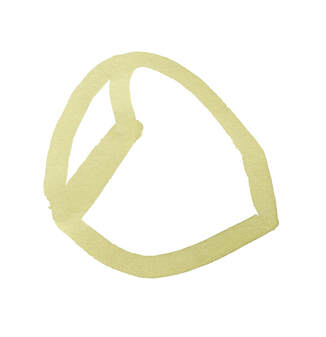
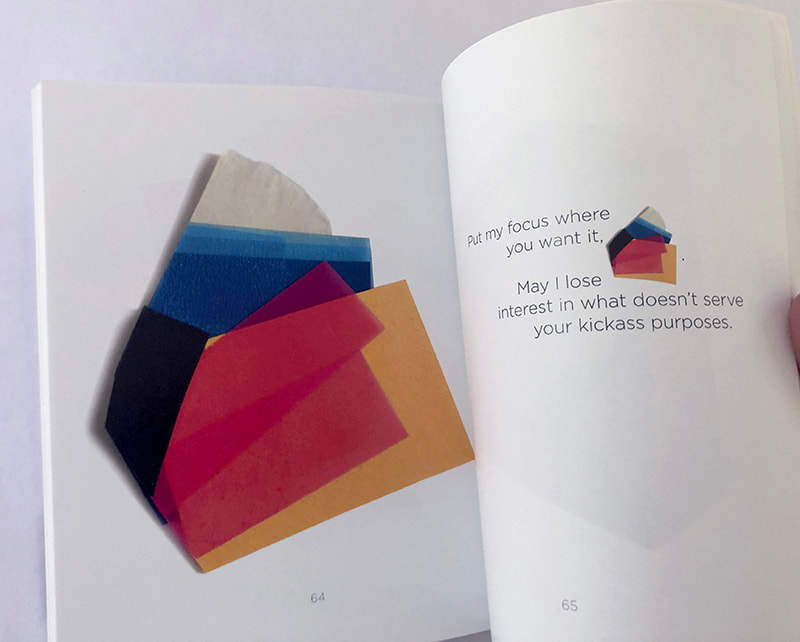
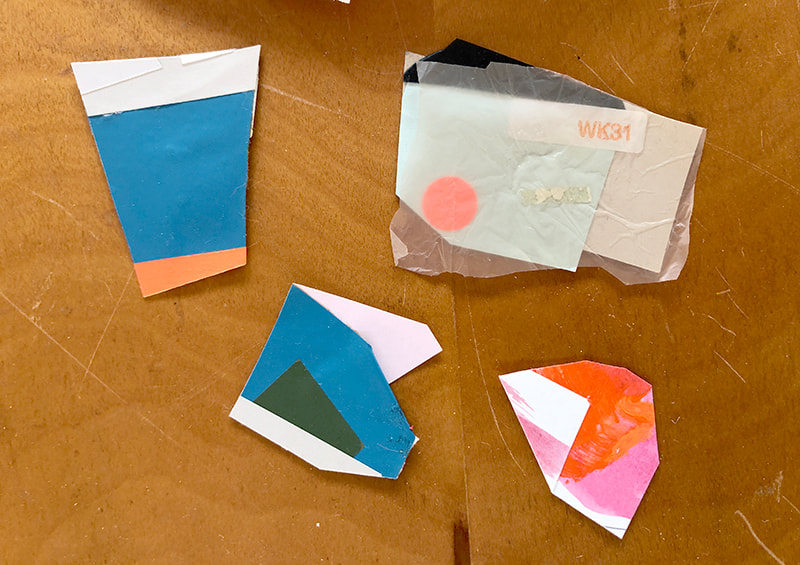
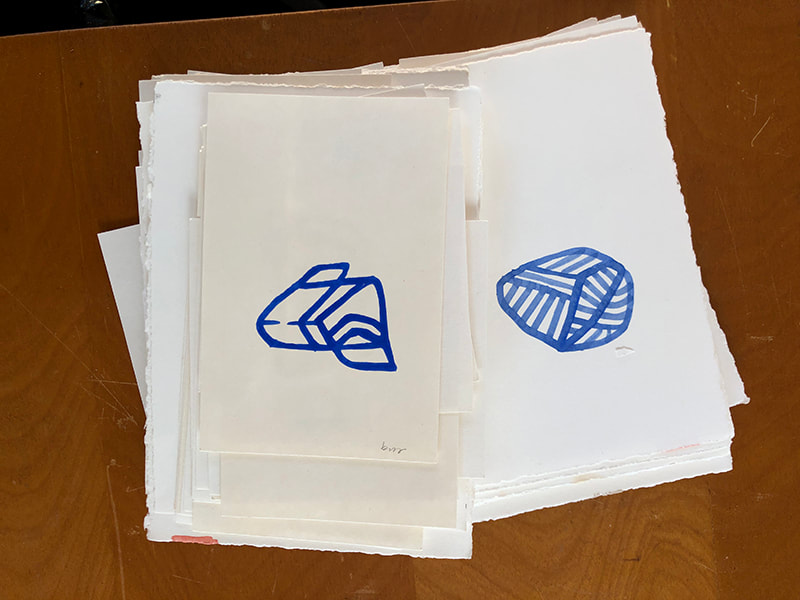
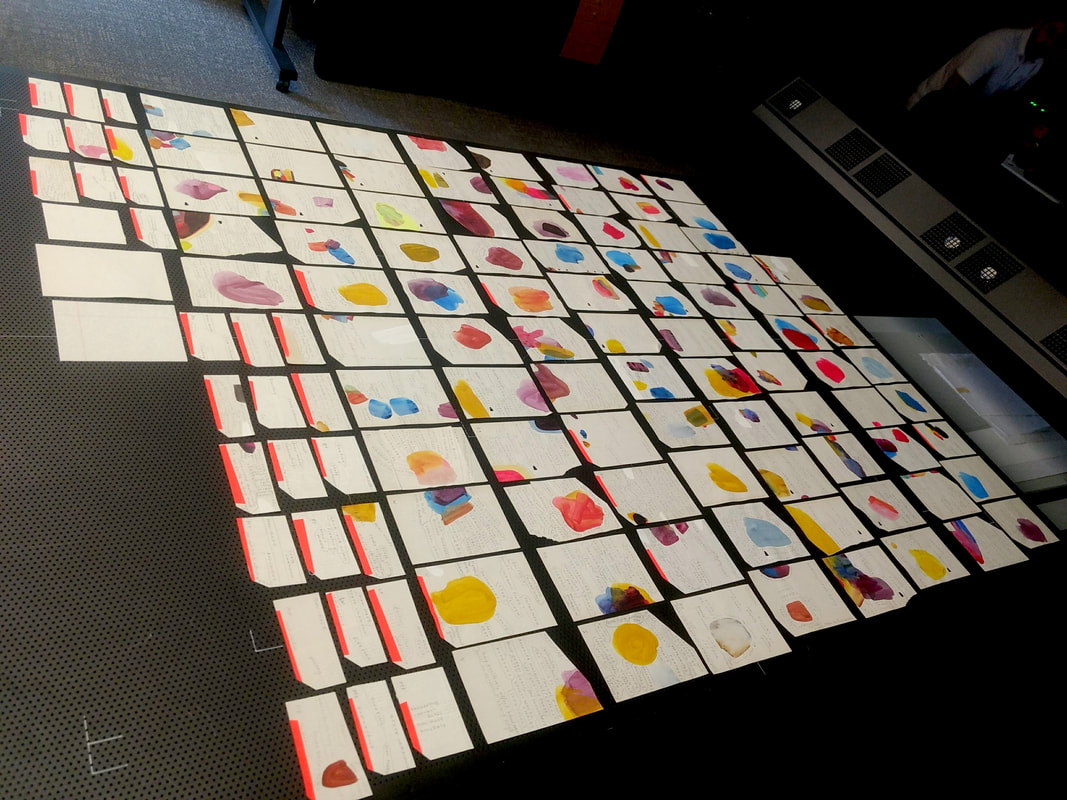
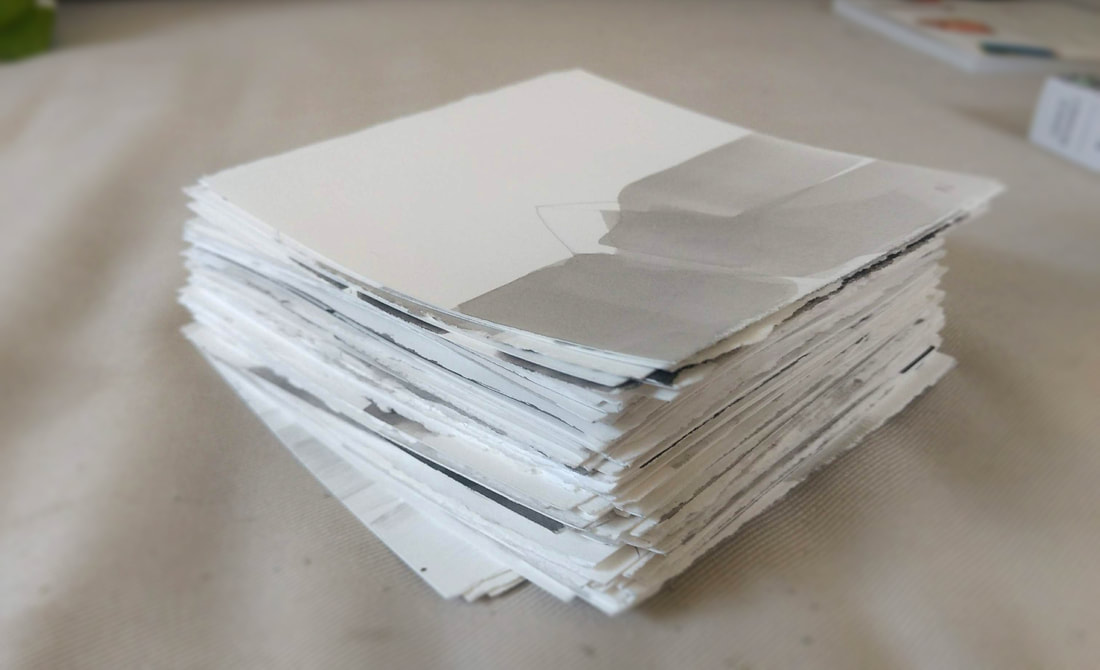
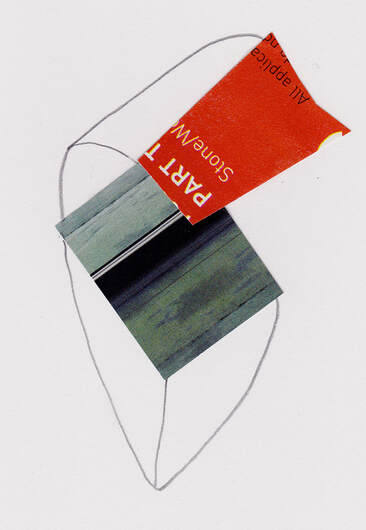
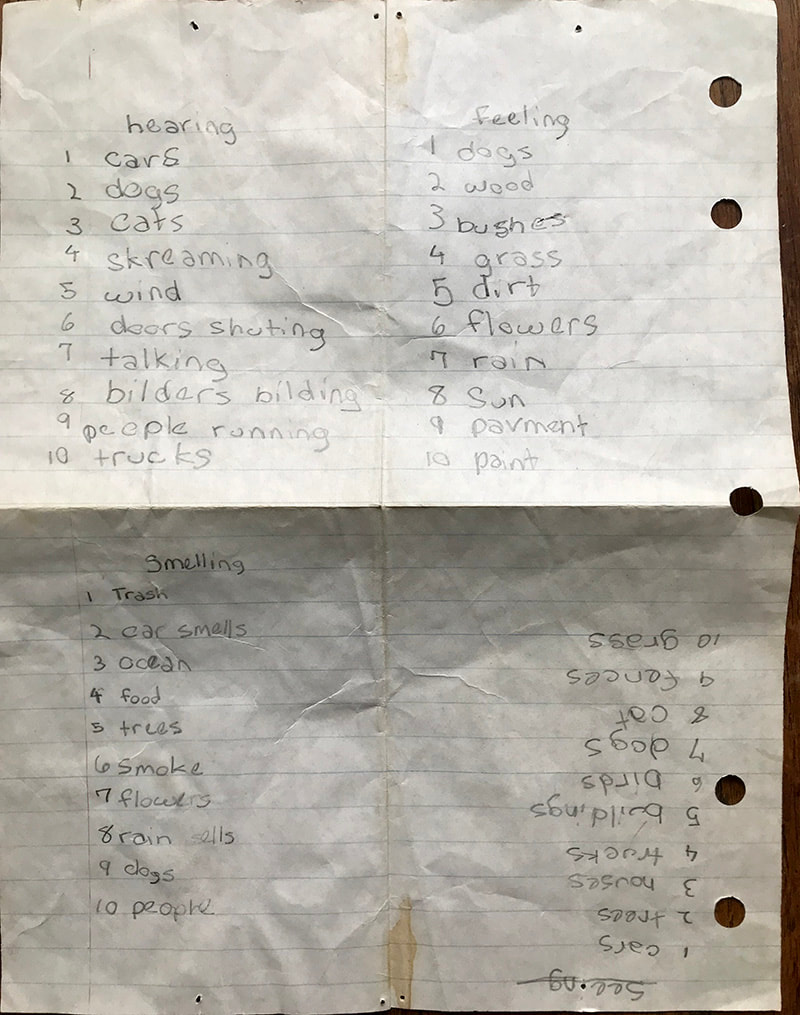
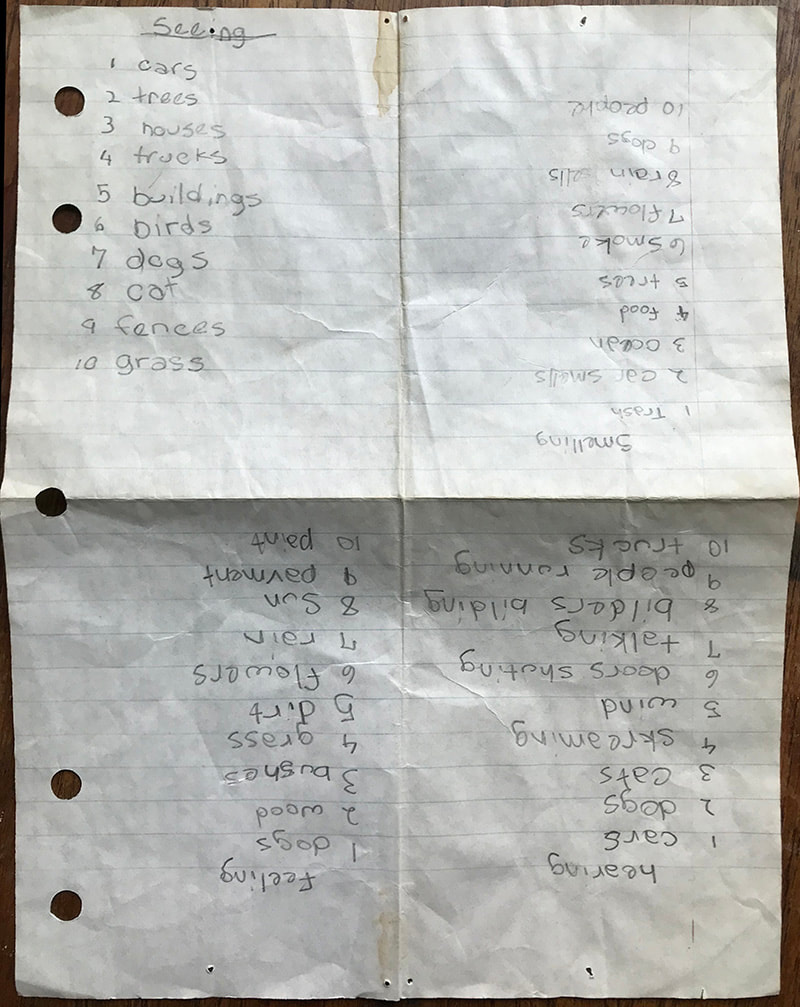
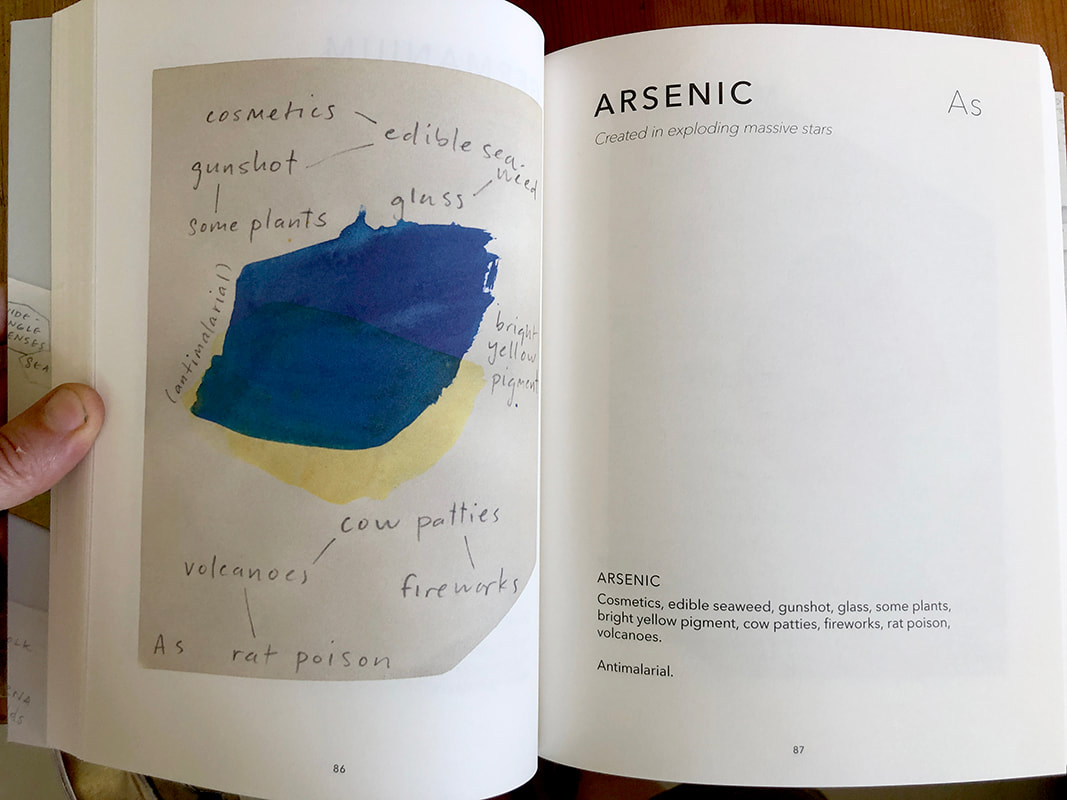
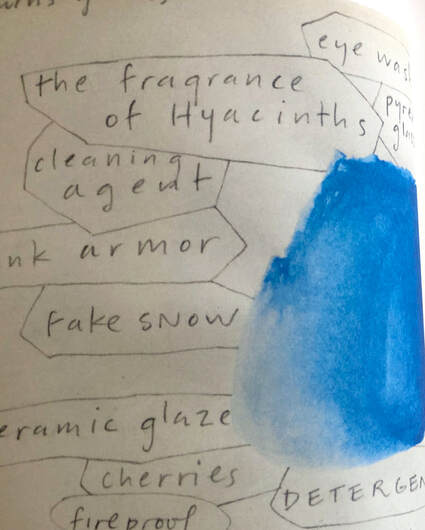
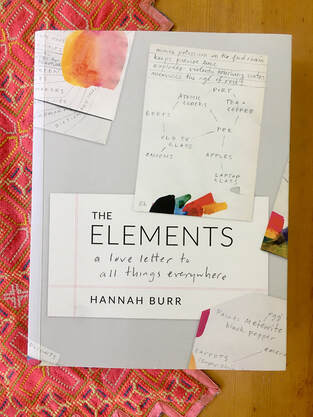
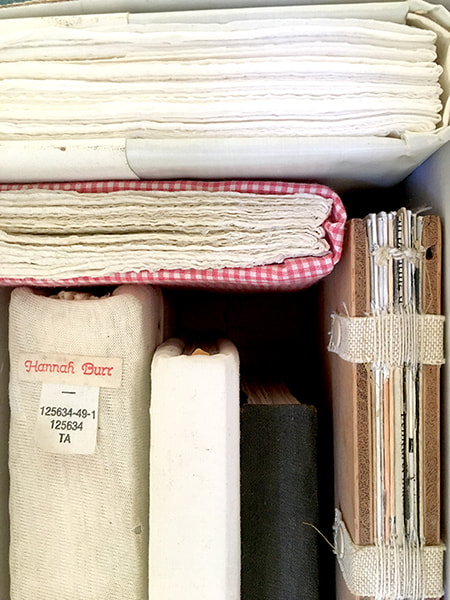
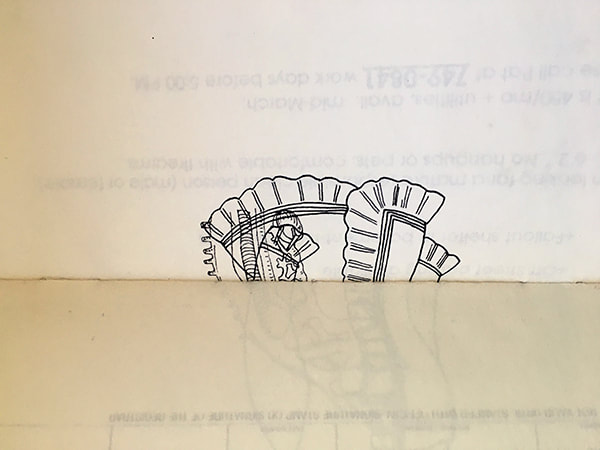
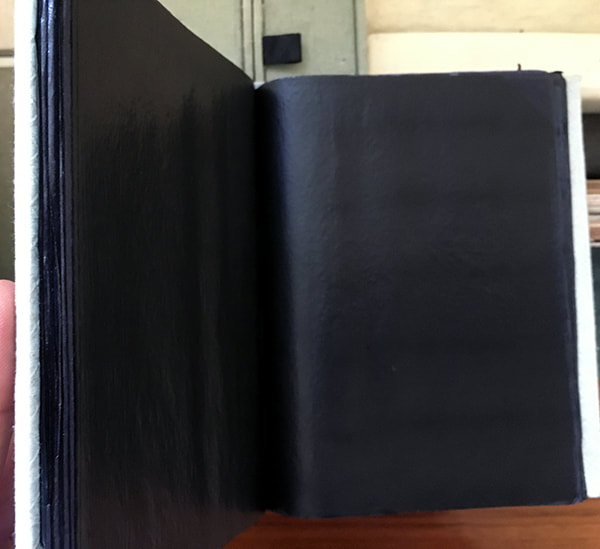
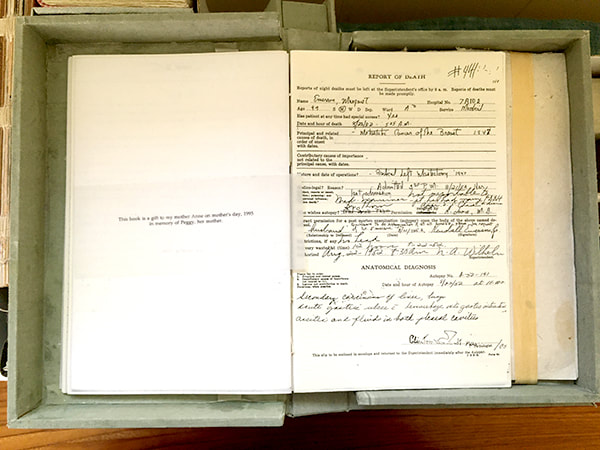
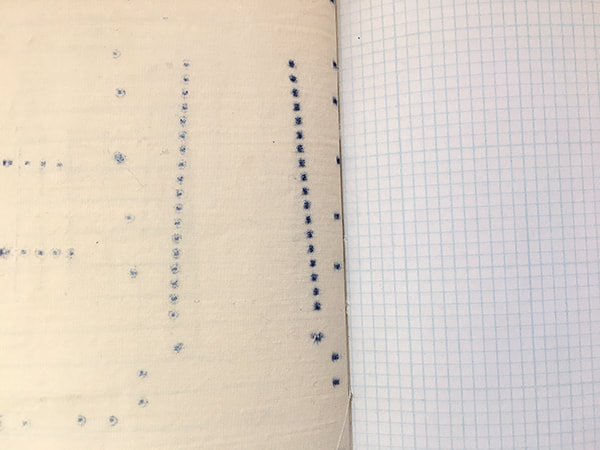
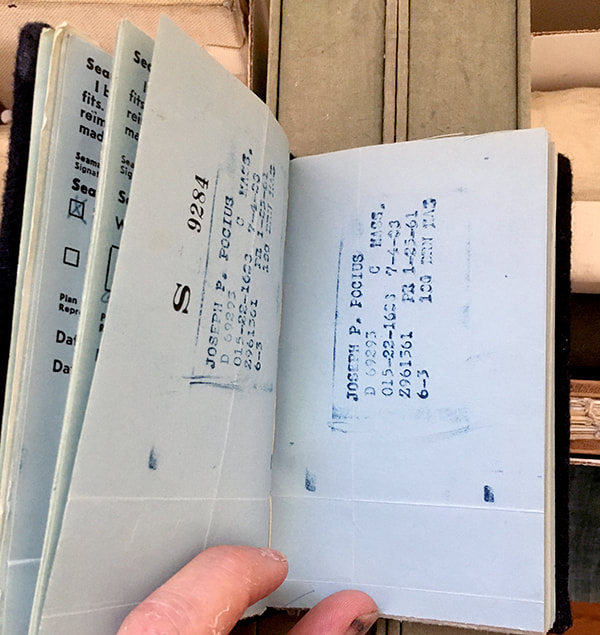
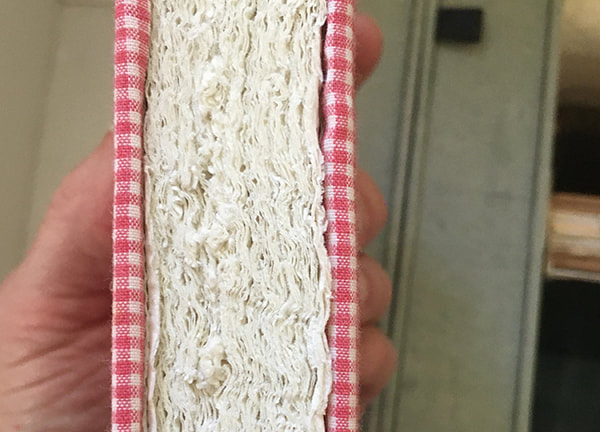
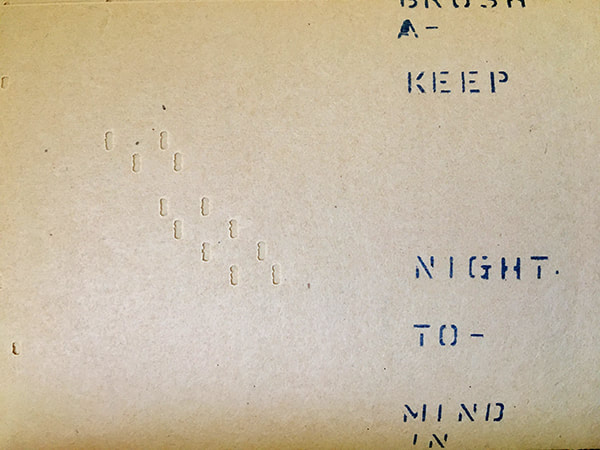
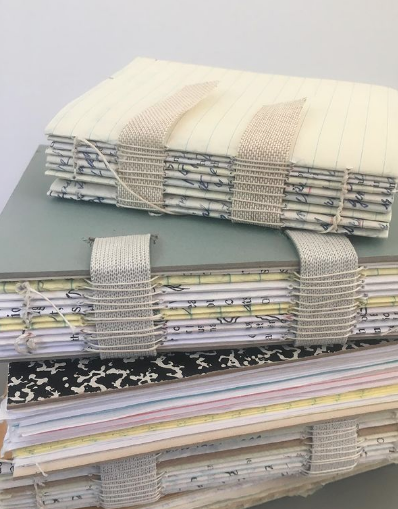
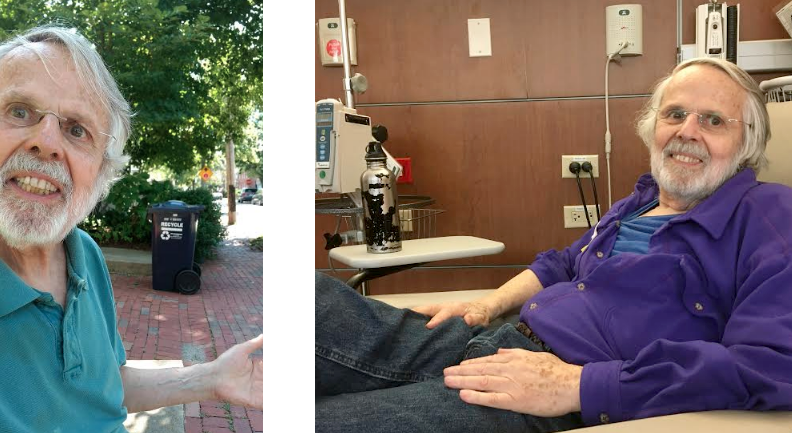
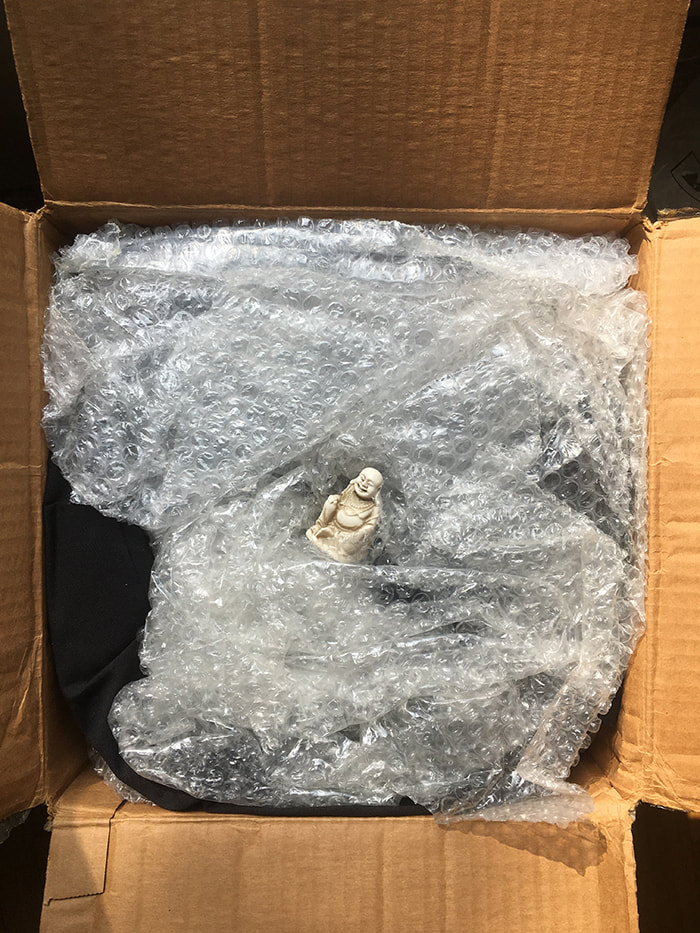
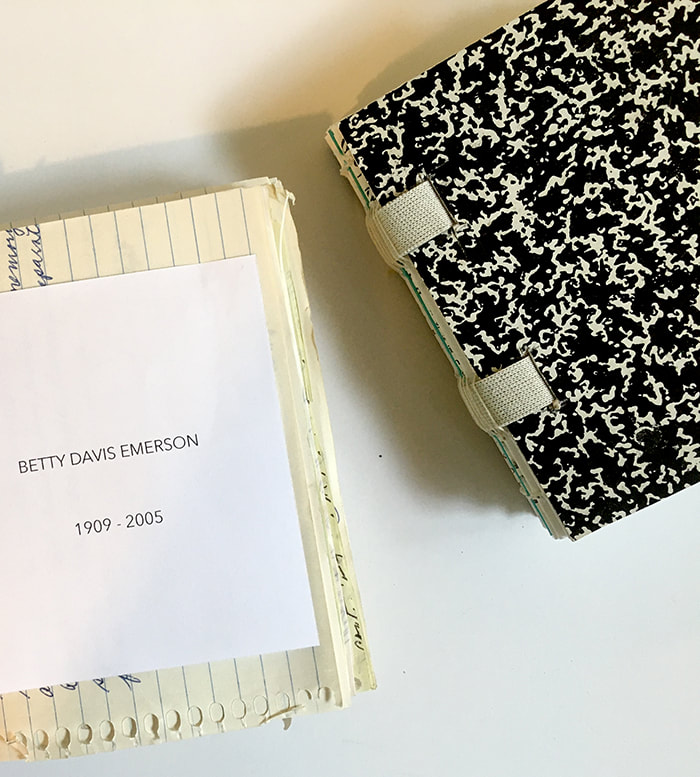
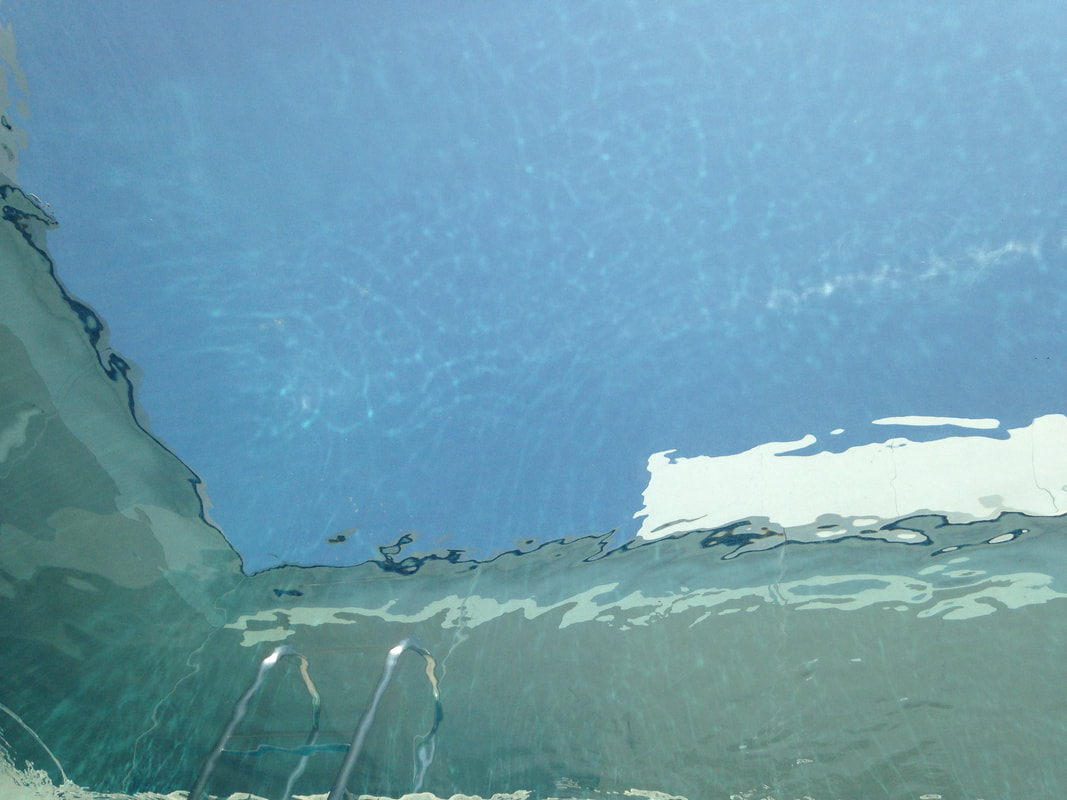
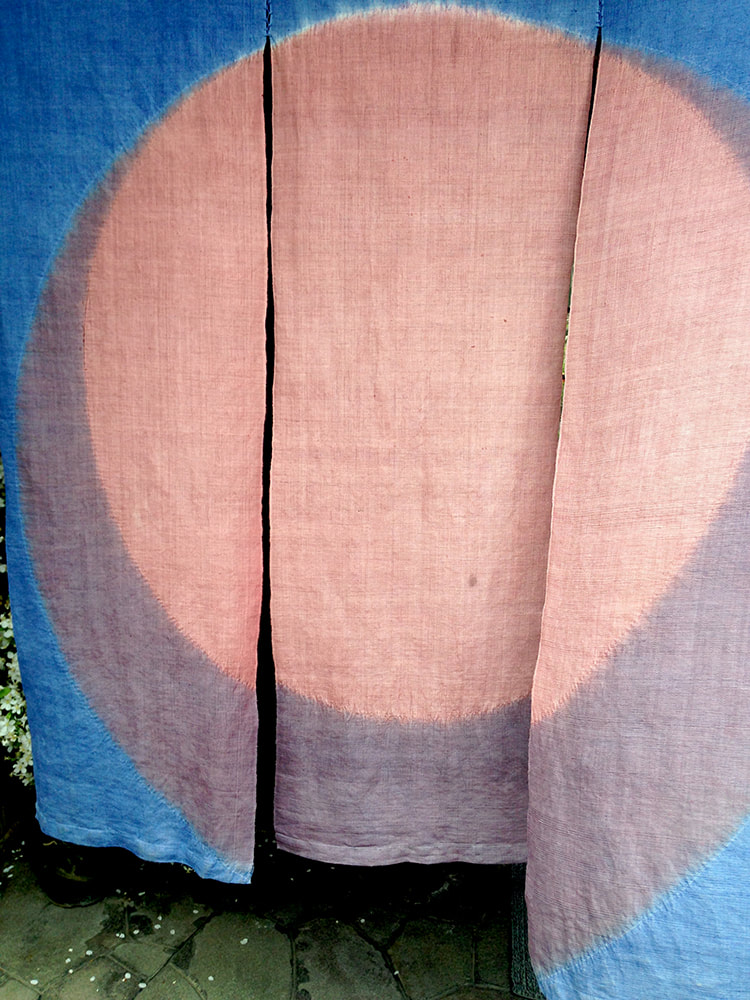
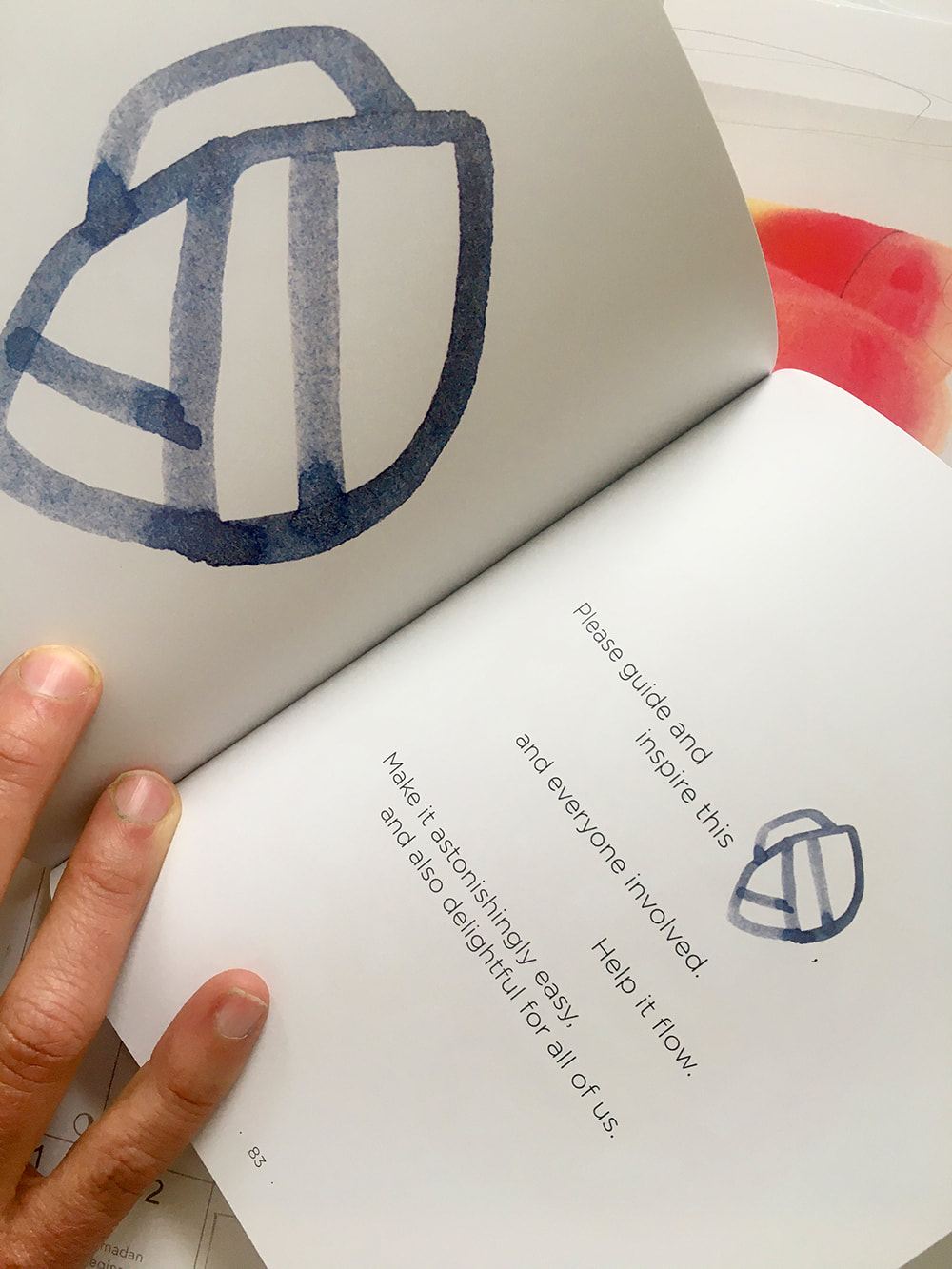
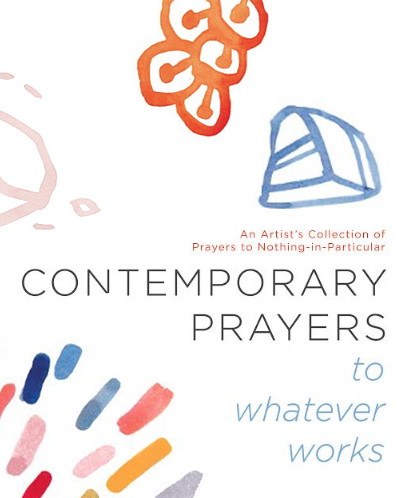
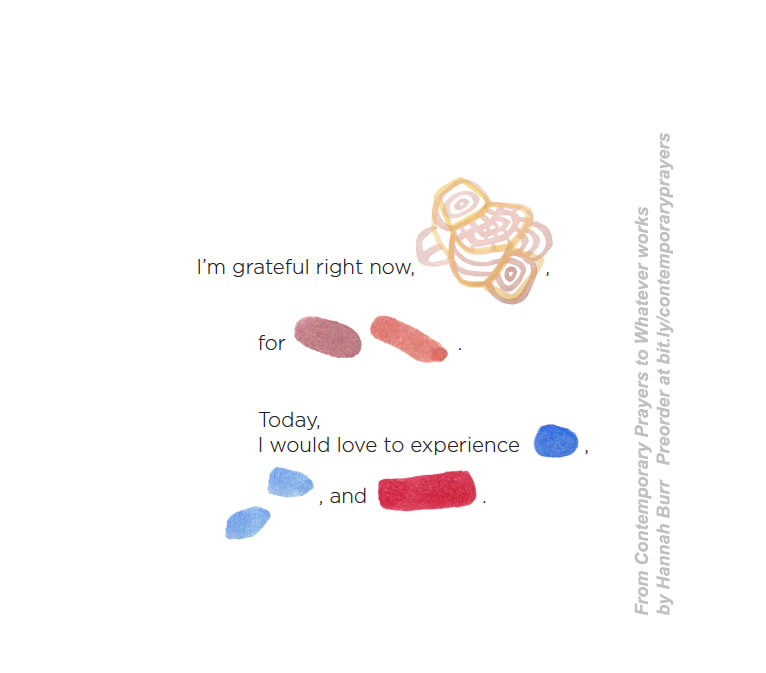
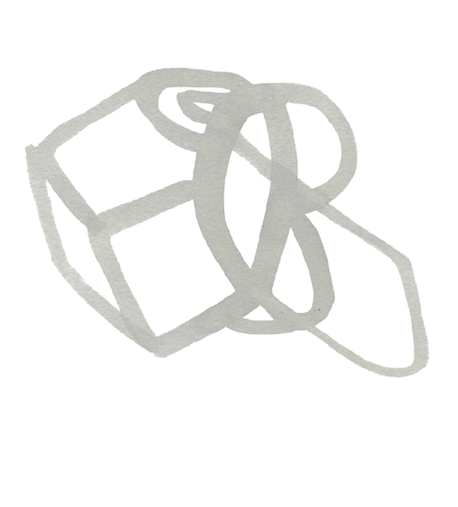
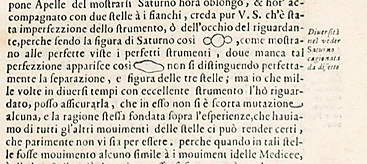
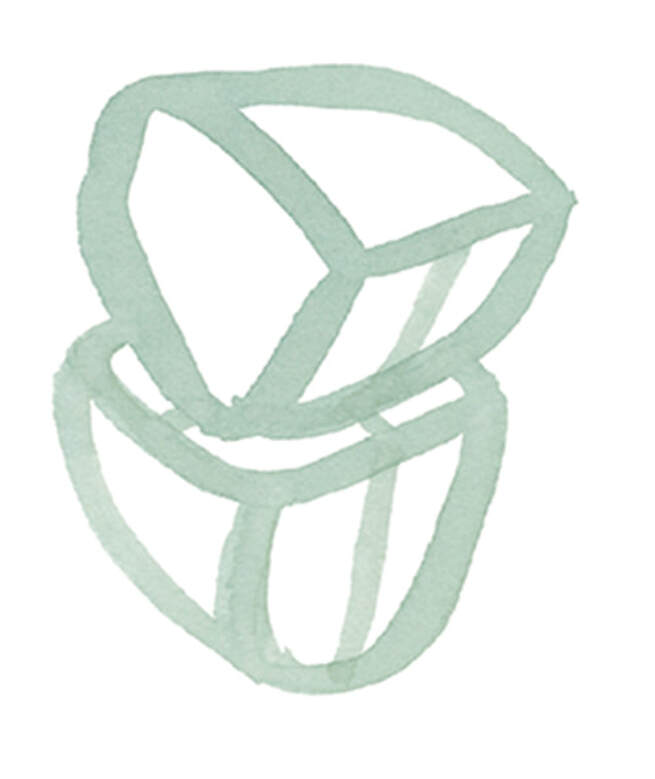
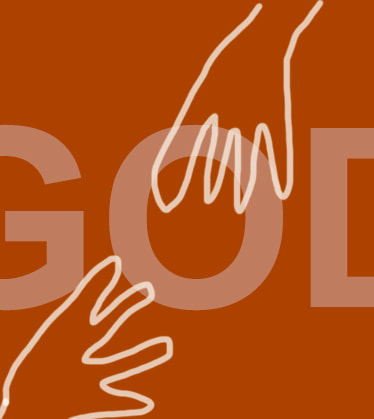
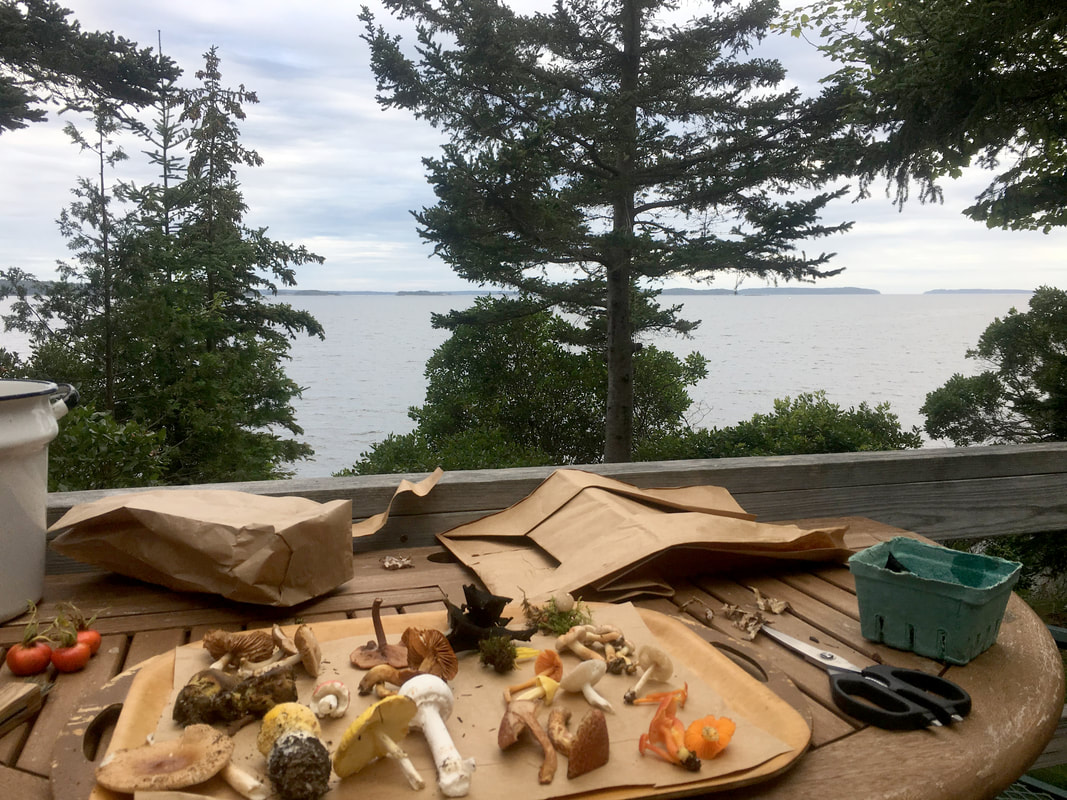
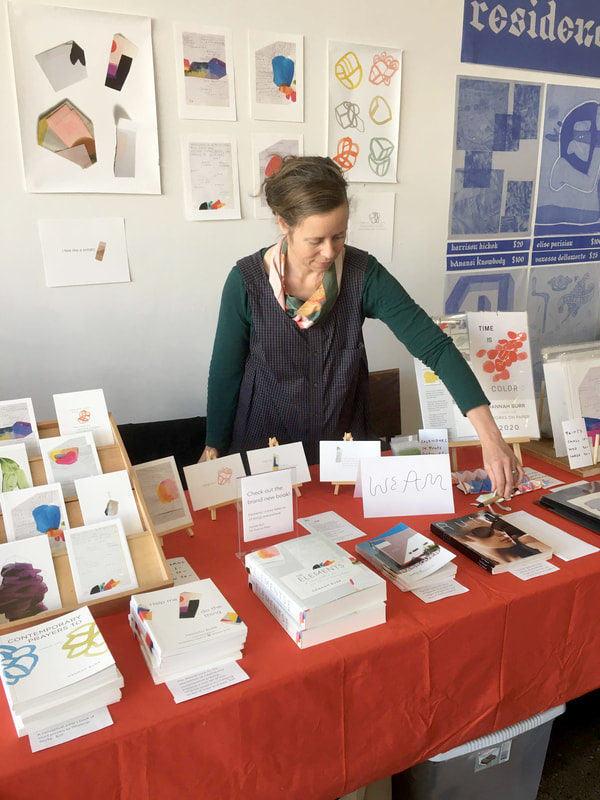
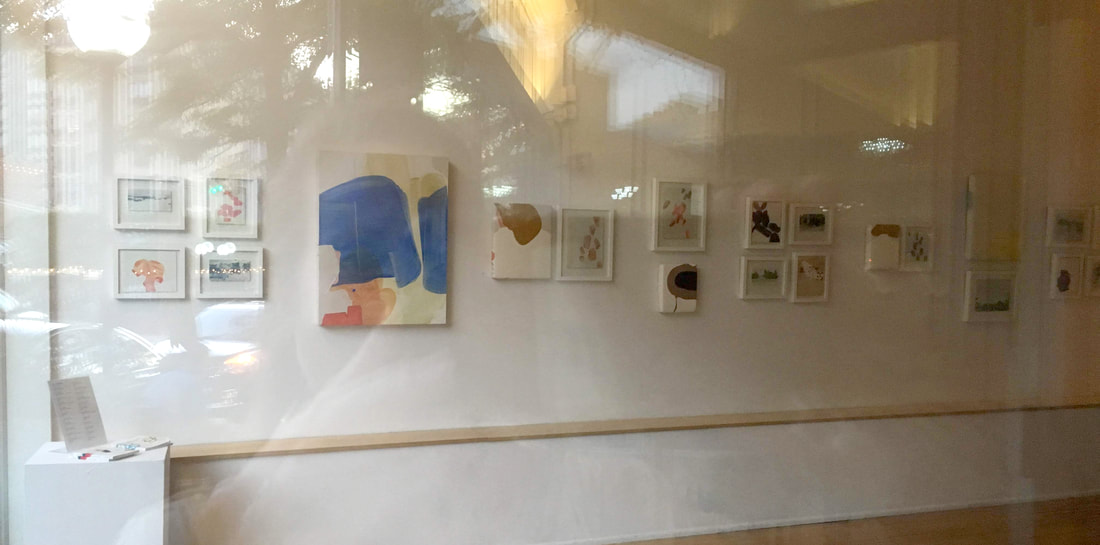
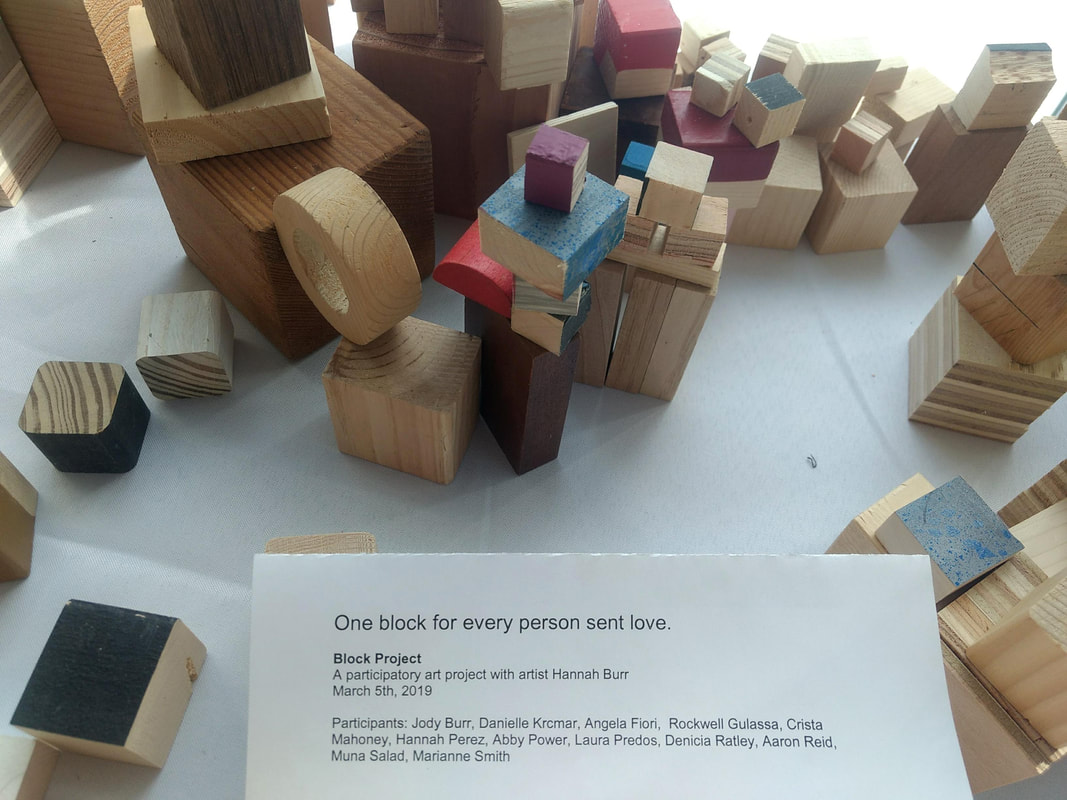
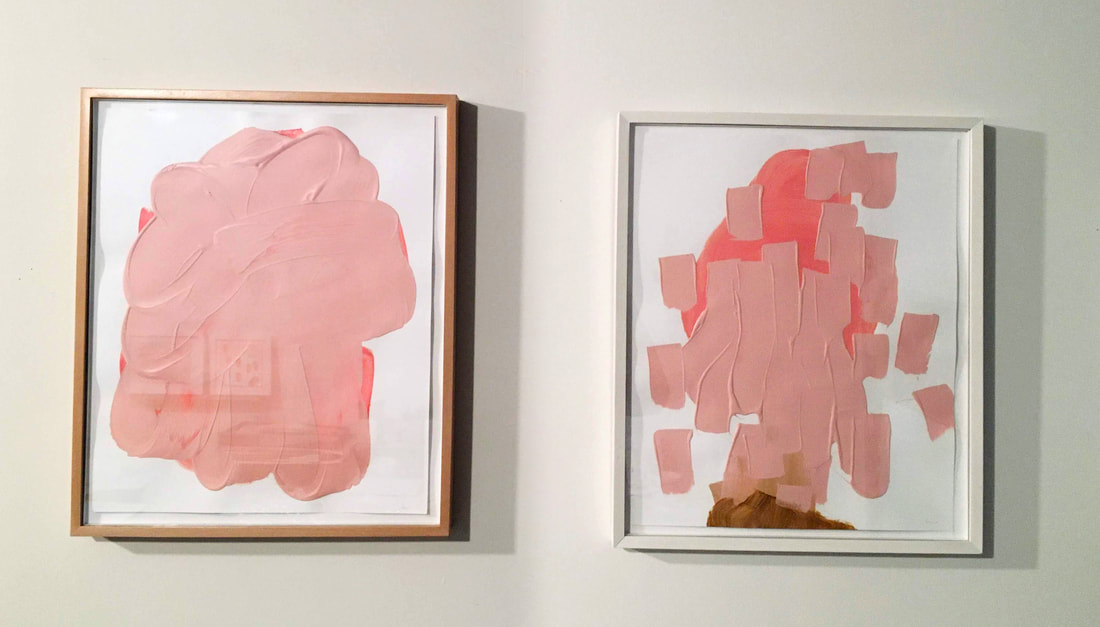
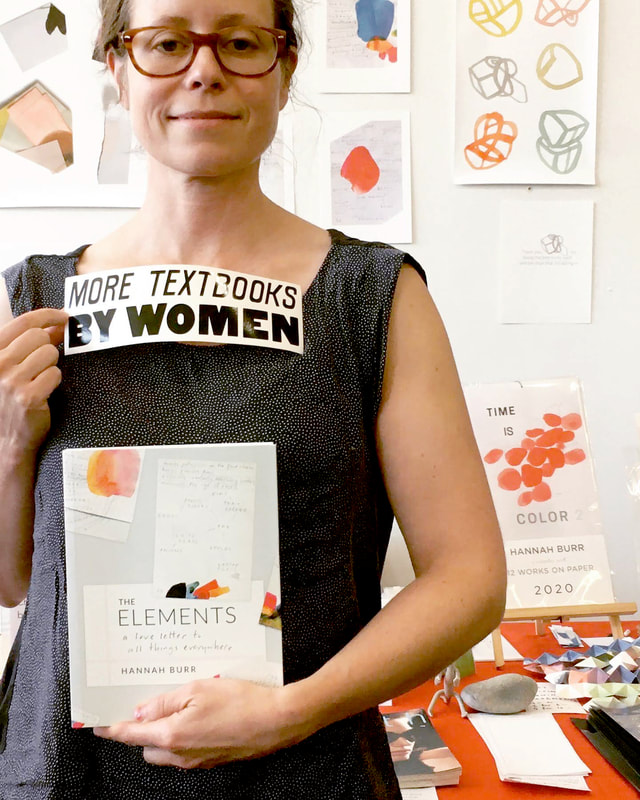
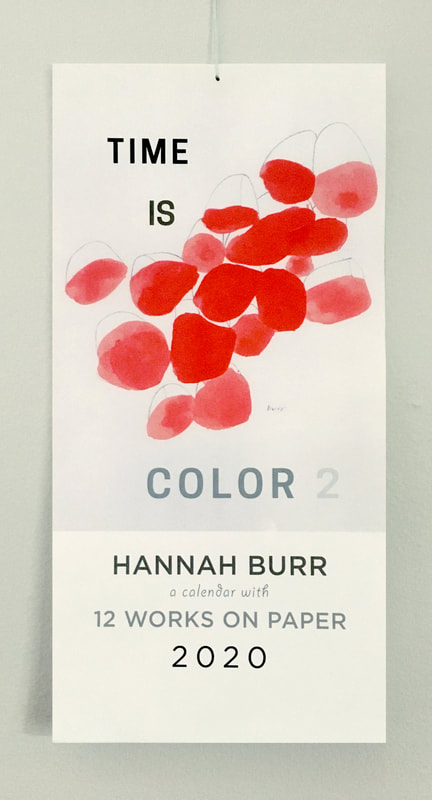
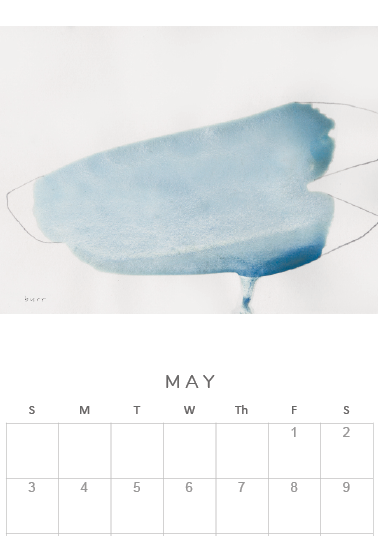
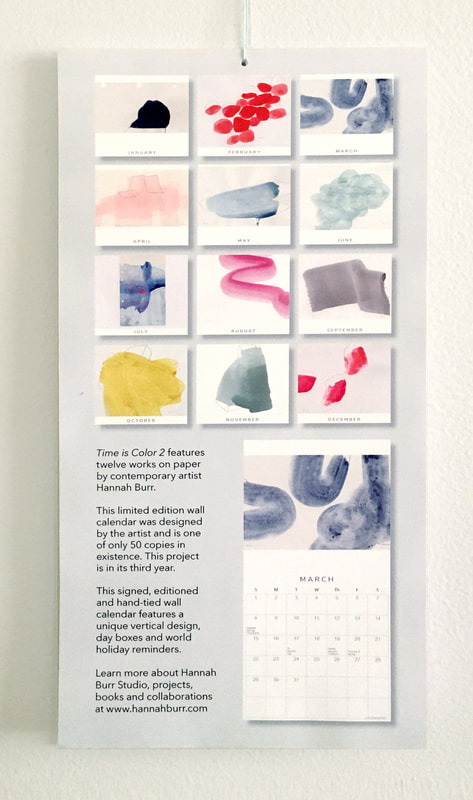
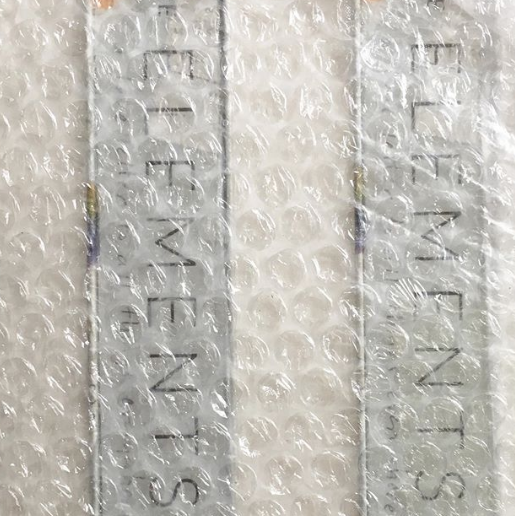
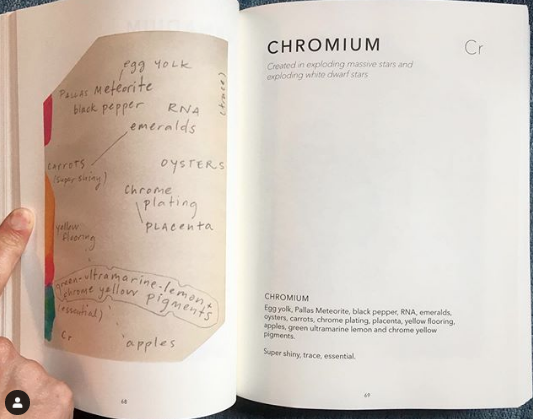
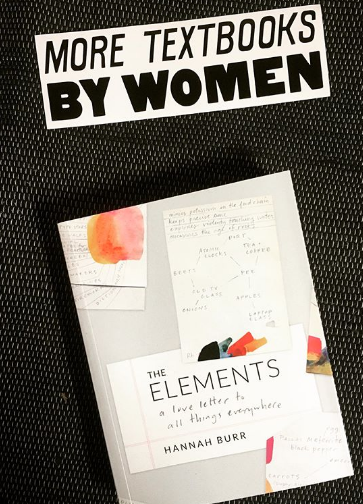
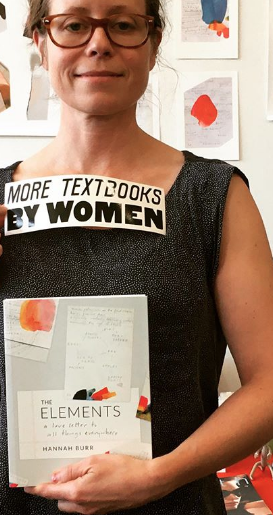
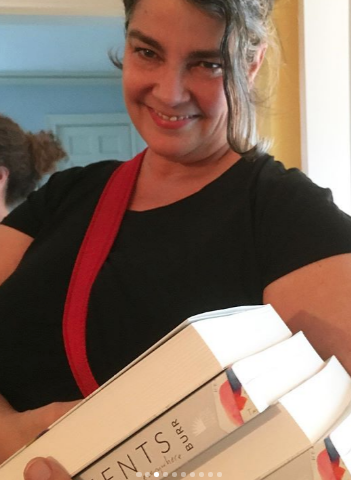
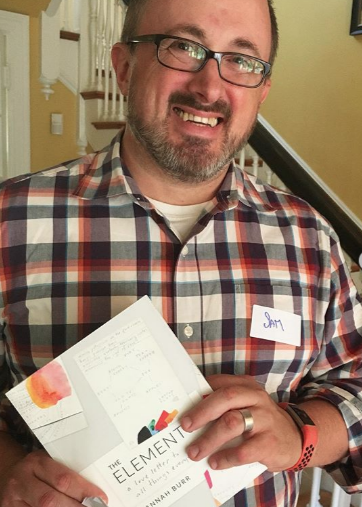
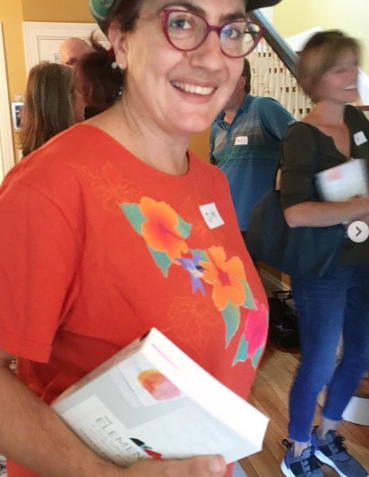
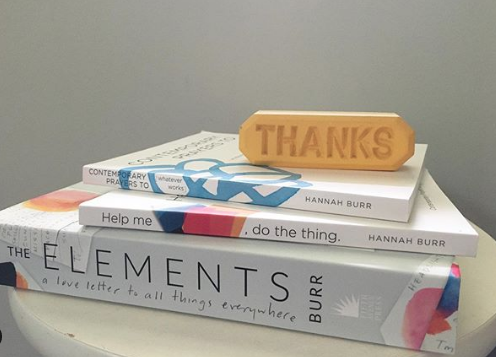
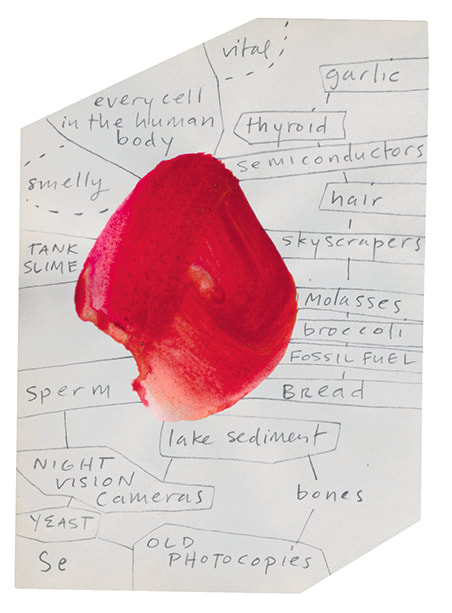
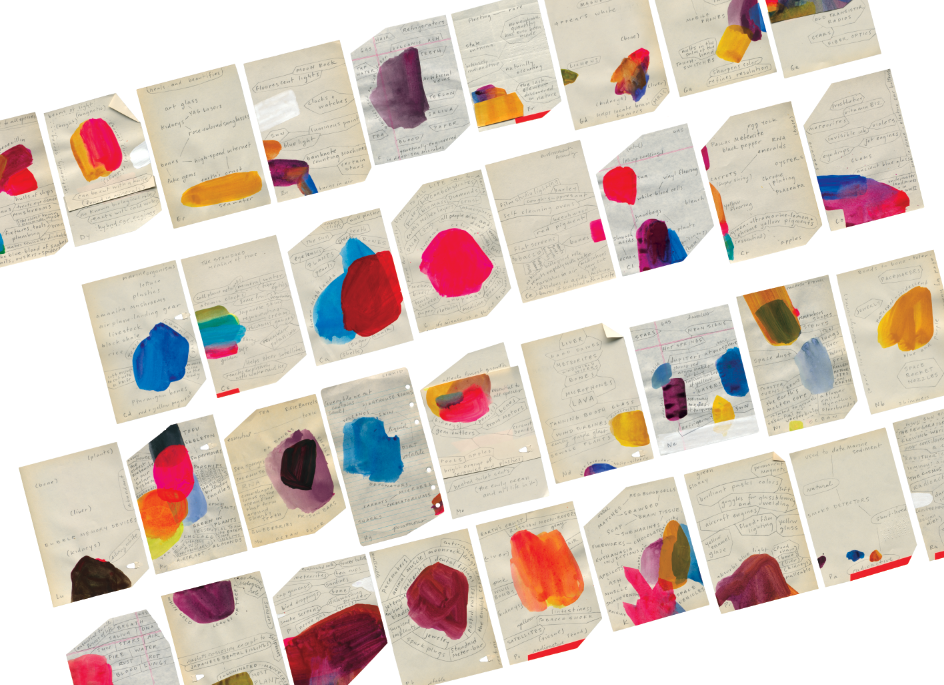
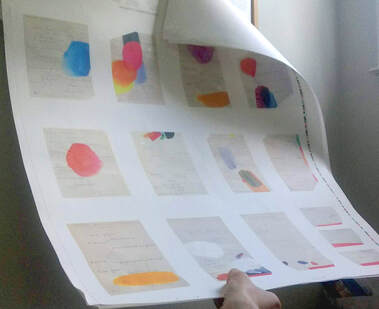
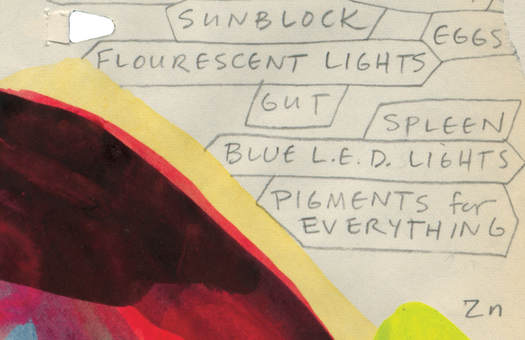
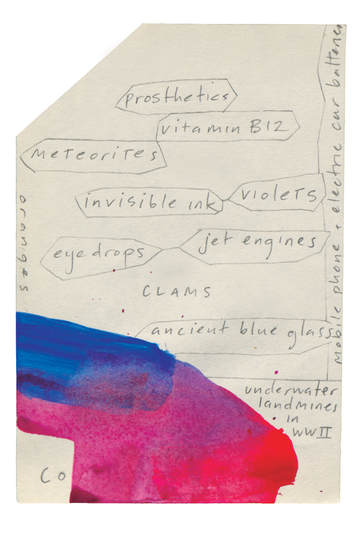
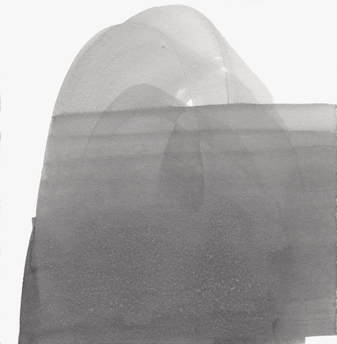
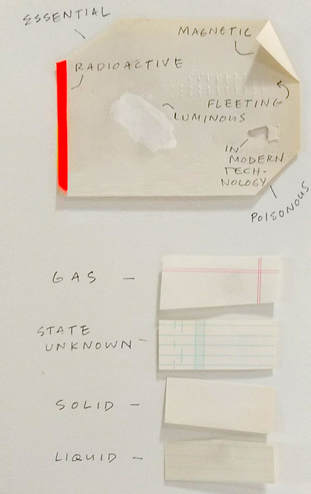
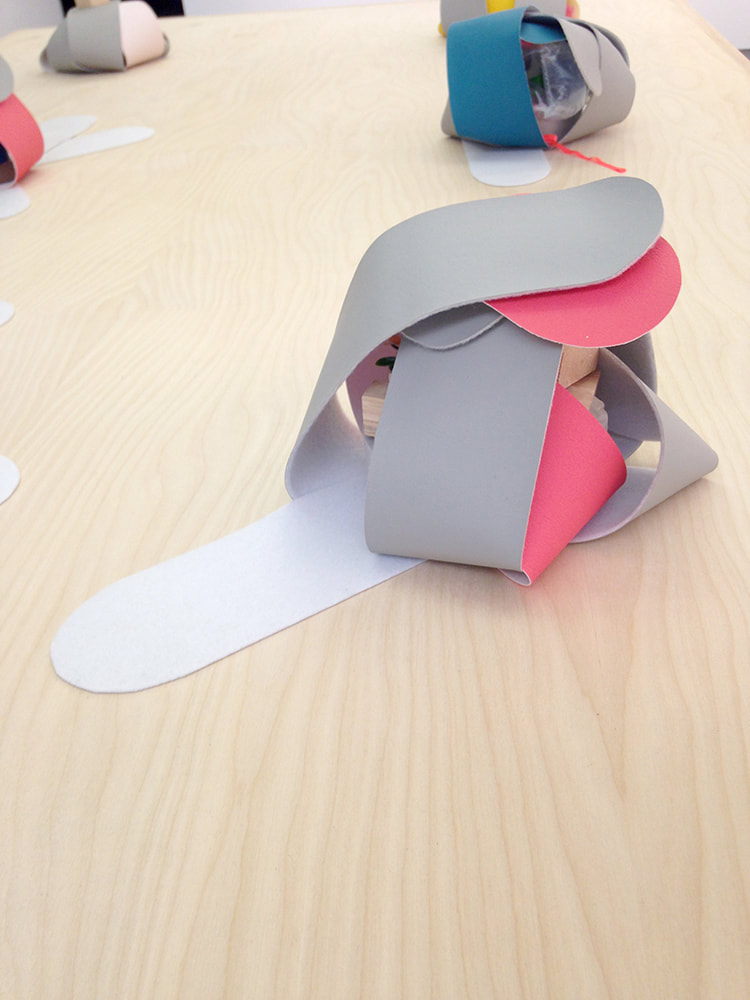
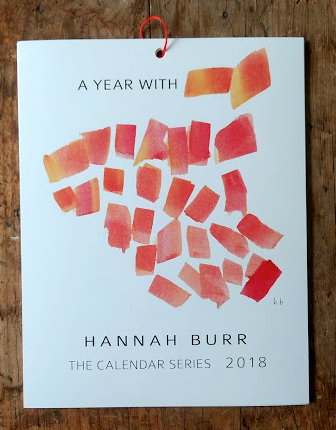
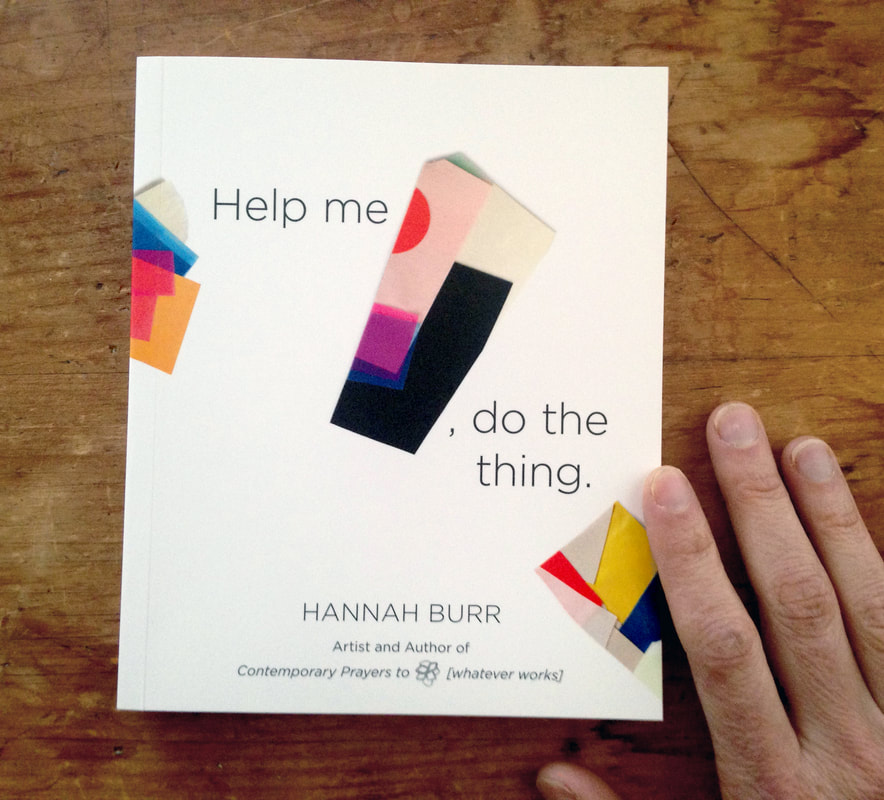
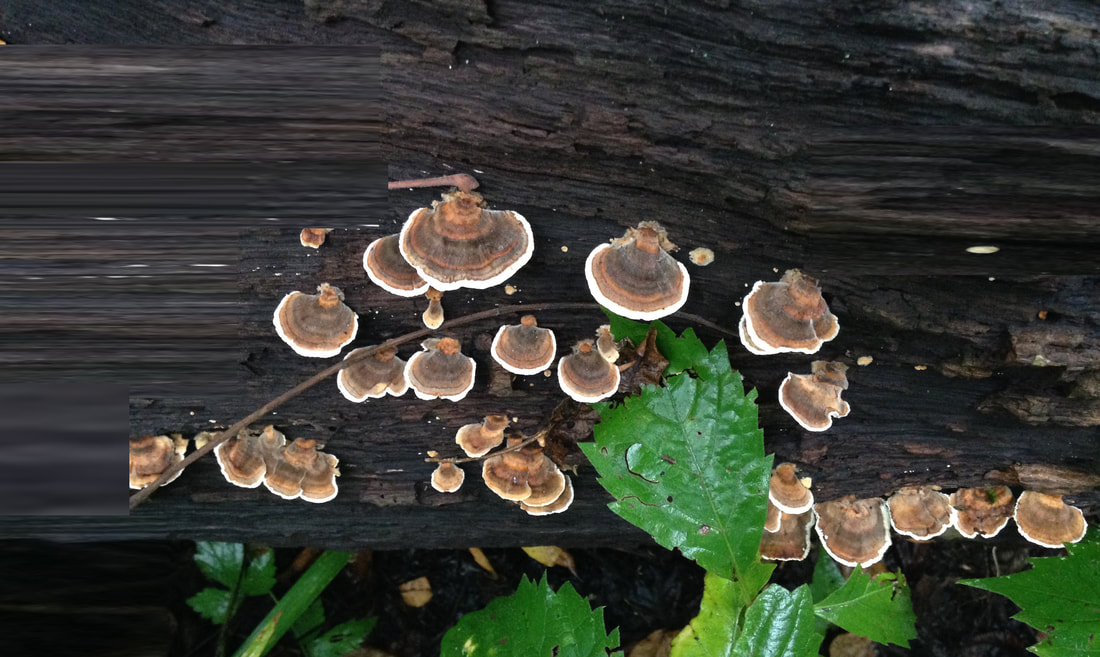
 RSS Feed
RSS Feed